- Details
- Written by: Gianna Esquivel
- Hits: 2274
We are not lost or dizzy. We are in Budapest, Hungary. But today we visited Szentendre and there, the confusion arose. We have a sensitive and well-trained nose haha. Outdoors or indoors, we can detect fast either a nice fragrance or a smelly sock if there’s around.
And after some minutes of walking in Szentendre, a known smell hit our noses. One could be wrong, but the two of us, come on, that’s too much hahaha. So, yes! There was a Serbian smell around and we decided to investigate.
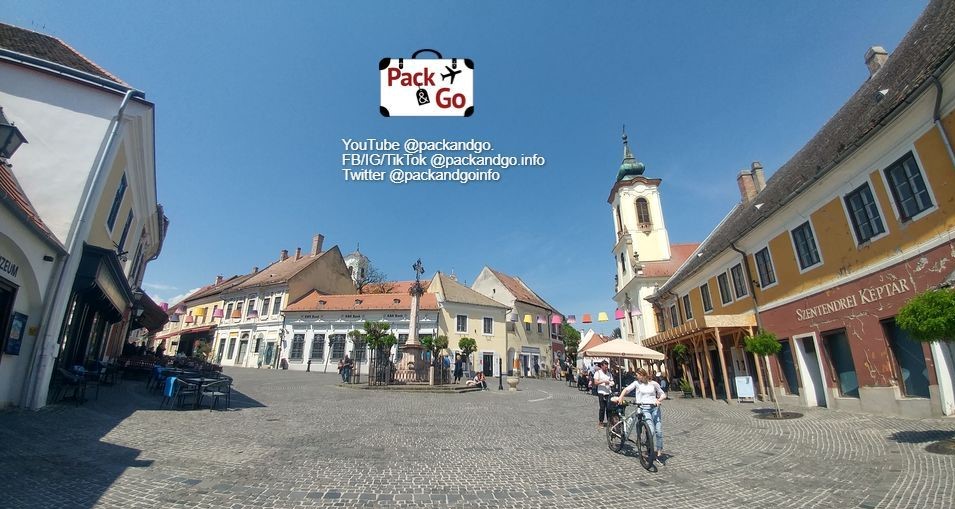
Where is Szentendre?
Take your map and locate Budapest, Hungary. Then approximately 23 km to the North, you will find Szentendre just next to the Danube River. This nice town is between the capital of Hungary and the Visegrád Mountains.
| Follow PackAndGo.info at: | |
| YouTube | @packandgo. |
| @packandgo.info | |
| @packandgoinfo | |
| @packandgo.info | |
| TikTok | @packandgo.info |
What does Szentendre mean?
Szentendre means St. Andrew. There is a church in the town with this name and it dates back to the 13th century.
What’s the History of Szentendre?
Ok, let’s back to our investigation. Walking around Szentendre, we felt that specific and delicious smell we mentioned. It was pljeskavica, guys! A very popular meal in Serbian cuisine. It's a meat patty, a tasty grilled dish that combines spices with different types of meat like lamb, beef, and pork. After that tempting hit in our nose, a second reality glitch: “M” read some names in Cyrillic, Serbian Cyrillic to be exact.
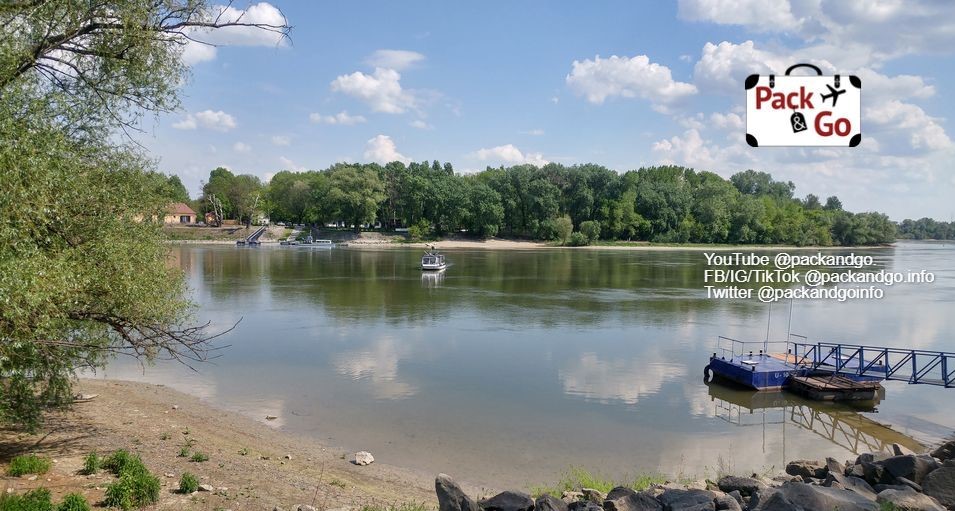
Yes, there’s History in Szentendre. It goes back to the 17th century when a big number of Greek, Serbian, and Dalmatian folks fled Ottoman Turkey. They managed to settle in the current Szentendre area because the Habsburg Emperor Leopold I offered them religious and civil liberties (1690). These immigrants are the origin of Szentendre. Before their arrival, the place was almost uninhabited.
In the 18th century, the town reached one of its best moments due to the work of its population. Its physiognomy was defined following the cobblestoned, labyrinthine, and narrow style of the typical streets of Mediterranean towns. Trading grew a lot and became the base of their Economy thanks to the Danube’s proximity. Transportation was not a problem for them. The production of wine was another activity that boosted the Economy. This prosperity allowed the construction of Baroque buildings, orthodox churches, and schools for the 6 thousand Serbians (approx.) that lived there. From a village, it reached town status, and finally, it became officially a city in 1872.
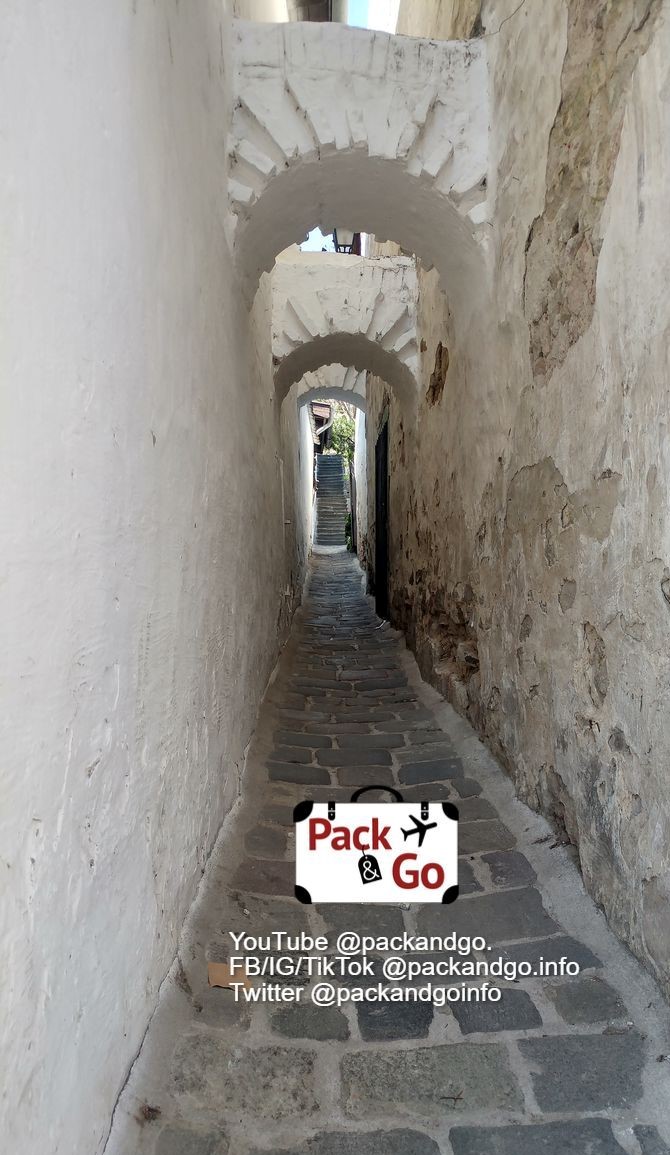
Later on, when the control of the Ottoman Empire finally got over (early 20th century), most of the people got back to their motherland. Hundreds of years after their original and successful settlement in Szentendre, only a few families decided to stay. Through time, their churches became Calvinist or Roman Catholic. They became a minority and by the late 19th century, Hungarians were already the main ethnic group.
In the 20th century, the quiet and nice vibe of Szentendre attracted the attention of artists (1929). A large number of actors, musicians, painters, poets, etc. moved to this city.
Since then, the place has expanded and more people have moved. Things for sure have changed but still, now, the architectonic and gastronomic traces of the people who made Szentendre a flourishing city remain there.
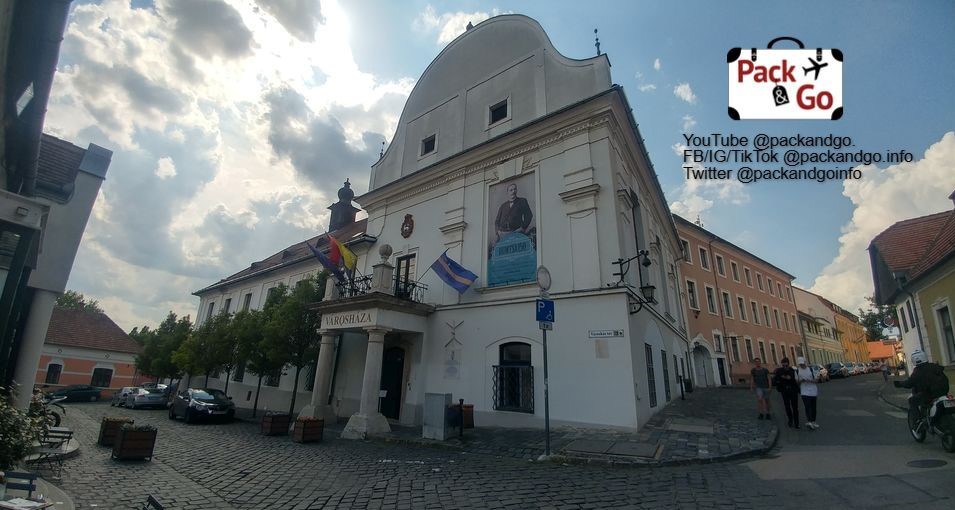
How to reach Szentendre?
Well, it depends on where you are. But considering Budapest as starting point, you can reach Szentendre easily by car (30 minutes), public transportation (40 minutes), and even hitch-hiking. For Hungarian drivers exiting the capital to the North, it won’t be hard to drop you in Szentendre or very close to there. This town will be kind of in their way.
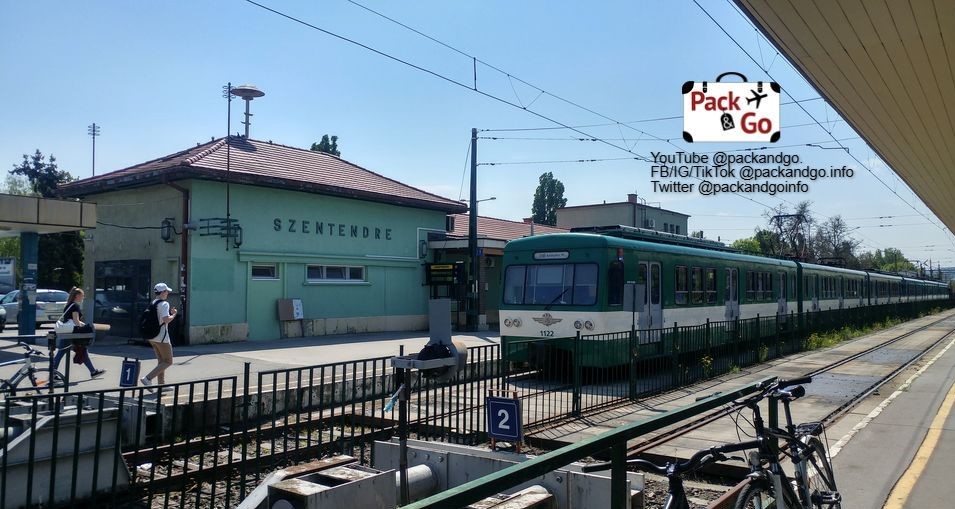
Szentendre train station, Hungary. Photo by packandgo.info
This time, we chose public transportation, a suburban train (HÉV, Hungarian abbreviation of railways of local interest). It was comfortable and fast to reach Szentendre. Especially on the way back, the traffic to Budapest was heavy. We were very glad not to be stuck there. The train moved without a problem. We needed to buy a regular ticket (350 HUF, around 1 EURO per ticket) to reach Békásmegyer train station and an extension ticket Békásmegyer-Szentendre (310 HUF, per ticket). Both tickets can be bought in a machine at the station you are in.
From the train station is very easy to walk to the old town of Szentendre.
Someone told us that, before the pandemic started, there was a boat or a boat tour to reach Szentendre from Budapest. If you like the idea, you can ask. We didn’t find this choice available at the time we were there.
What to do in Szentendre?
From your arrival, you can enjoy the Mediterranean vibes of Szentendre’s streets, its colorful houses, buildings, and the Baroque style of architecture. Stop in one of the multiple coffee shops or restaurants to try tasty Hungarian and Serbian dishes. Choose a bench in front of the Danube to contemplate it or do people-watching. Honestly, it’s a small place with many choices for spending a great time.
You also can look for museums (more than a dozen), churches (there are at least 10 different churches), monuments, buildings, souvenir shops, or galleries to visit.
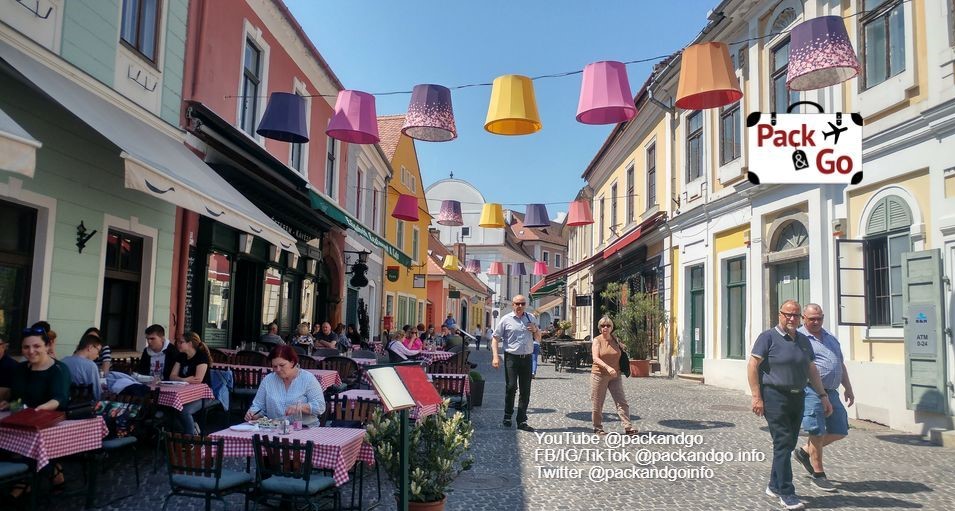
The main square (Fo Tér)
To walk in the main square is a must. It’s small and cute. The first landmark you will see is the Memorial Cross and then, many colorful coffee shops and souvenir shops. The square has been, since the Middle Ages, a center of economic and social life. The cross was built (1763) by Serbian merchants to thank that an epidemic at the time did not hit the town.
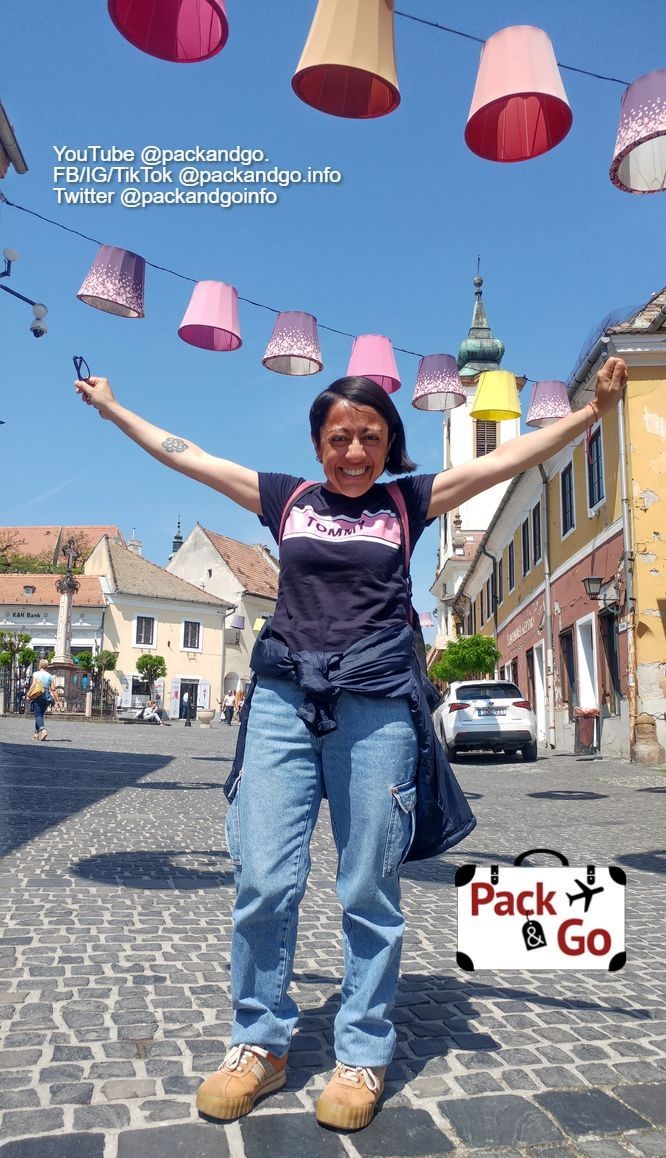
If you are into crosses, there are at least 3 more that you can look for around Szentendre. Each of them has a different story, and a different viewpoint of the town (Tanners’ cross, Tsar Lazar’s cross, Vine-growers cross).
Annunciation or Blagovestenska Church
It was built in the 18th (1752) by the Hungarian architect, András Mayerhoffer. It honors the annunciation of the Virgin Mary. It’s a Serbian Orthodox church and it will be on your way while exploring the center or main square. If you are into churches or architecture, you may like it.
Belgrade Cathedral or Saborna
It was built (1762-1764) by the Serbians, Greek, and Dalmatian immigrants who fled Belgrade and its surroundings due to Ottoman domination. It was originally constructed with stone and brick, rather than wood like all the other churches in town. Soborna makes you see the difference, a contrast, with the previous and other churches in town.
Church Hill
This is a Roman Catholic church dedicated to Saint Andrew. We visited it because we were told that is the oldest in town and even considered a monument. Its construction dates back to the 13th century but it was destroyed and reconstructed at different times. It got a Gothic style for some time, but finally, it got the Baroque style thanks to the Catholic Dalmatians who rebuilt it after the Ottoman occupation.
Open Air Ethnographic Museum o Szabadtéri Néprajzi Múzeum (Skanzen)
The Ethnographic museum is big and it will take you back between 100 and 200 years to life in the countryside. It’s an area of 60 hectares where 312 different buildings (churches, barns, traditional houses, workshops, etc.), divided into 8 regions, are exhibited. You can explore it by foot, or bicycle (rental), or you can take the Skanzen train (it stops at 5 points from which you can reach the 8 regions of the exhibition). It's a natural place and this makes the experience nicer.
To reach this museum, let’s say from the main square of Szentendre, you have to walk 3.8 km. If you prefer to save energy for walking in the big museum, take a local bus from Szentendre to Skanzen and you will be there in less than 10 minutes. There’s an entrance fee of 2,600 HUF per adult (almost 7 EURO). There’s a fee for parking if you go by car (900 HUF).
Is Szentendre worths a visit?
Yes, we think Szentendre is worth a visit. Some people skip it but mostly because they don’t have time enough to go. If you plan a weekend or a short holiday in Budapest, yes, the capital is beautiful and it offers many attractions. For sure, you will stay only there. But if you have time, don’t miss the chance to visit this cute and picturesque place. It’s not expensive to reach it. Public transportation is very efficient. It’s not far from Budapest and it’s next to the nice Danube river. You can go there for a day trip or a weekend. We went on a working day and it was not crowded. It was a very relaxing trip.
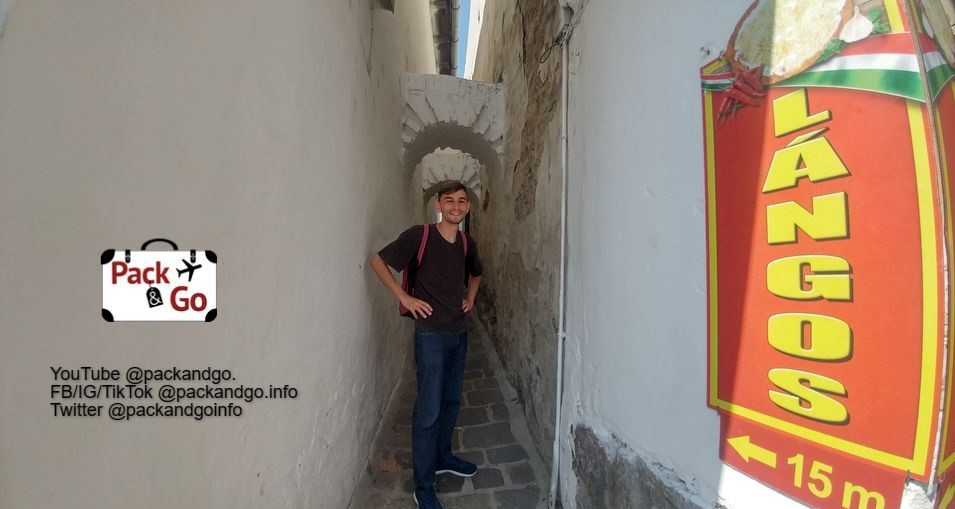
If you are a fan of the TV series The Witcher, you have an extra reason to visit Szentendre. This place and different locations in and around Budapest were used to film the first season (2019). The creators of the TV series considered Szentendre and its surroundings the ideal locations to recreate the medieval world of Geralt of Rivia. If you know and like the story, based on the books of the Polish writer Andrzej Sapkowski, being in this Hungarian place can be exciting. At least during our stay, we didn’t see witches, elves, or mutants. But who knows, your experience here can be different and we will love to hear it!
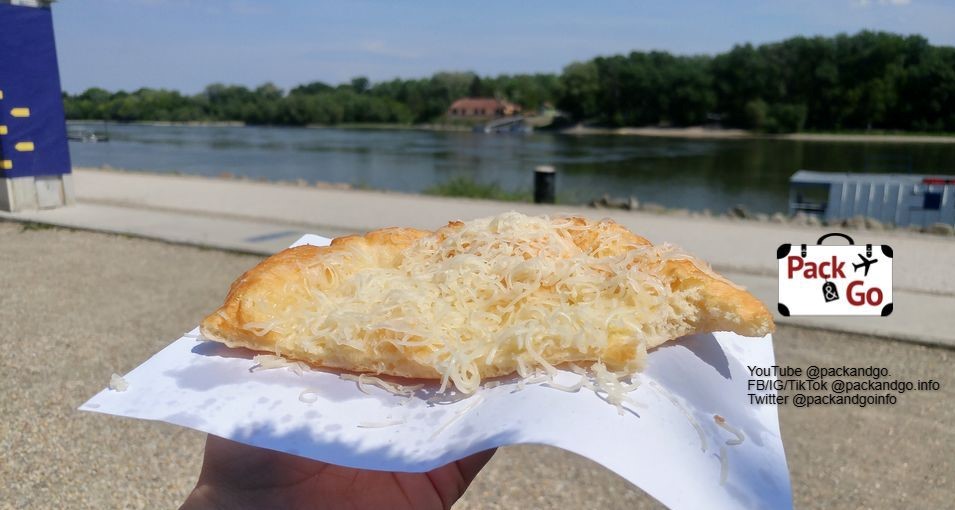
Conclusion
Mystery solved! Now you know that Szentendre is a very nice Hungarian destination and why it smells like Serbia. We recommend you to go there but be ready to face a dilemma. What to eat? Hungarian or Serbian food? Both are delicious! To arrive with an empty belly could be a good idea not to miss a single choice!
Follow our journey and be ready for our next stop!
Check more interesting articles about Budapest, Hungary:
Avoid the Pest side of Budapest at all costs! Here is why!
Top 5 parks in Budapest for picnic lovers
5 Reasons to Fall in Love with the Buda Side of Budapest: An Insider's Guide
| Follow PackAndGo.info at: | |
| YouTube | @packandgo. |
| @packandgo.info | |
| @packandgoinfo | |
| @packandgo.info | |
| TikTok | @packandgo.info |
- Details
- Written by: Gianna Esquivel
- Hits: 3129
We are big fans of parks and nature in general. We love to lie on the grass! When we travel, many of our very long walks exploring around finish in a park with nice grass to rest on. And fortunately for us, Budapest has a lot of parks to enjoy.
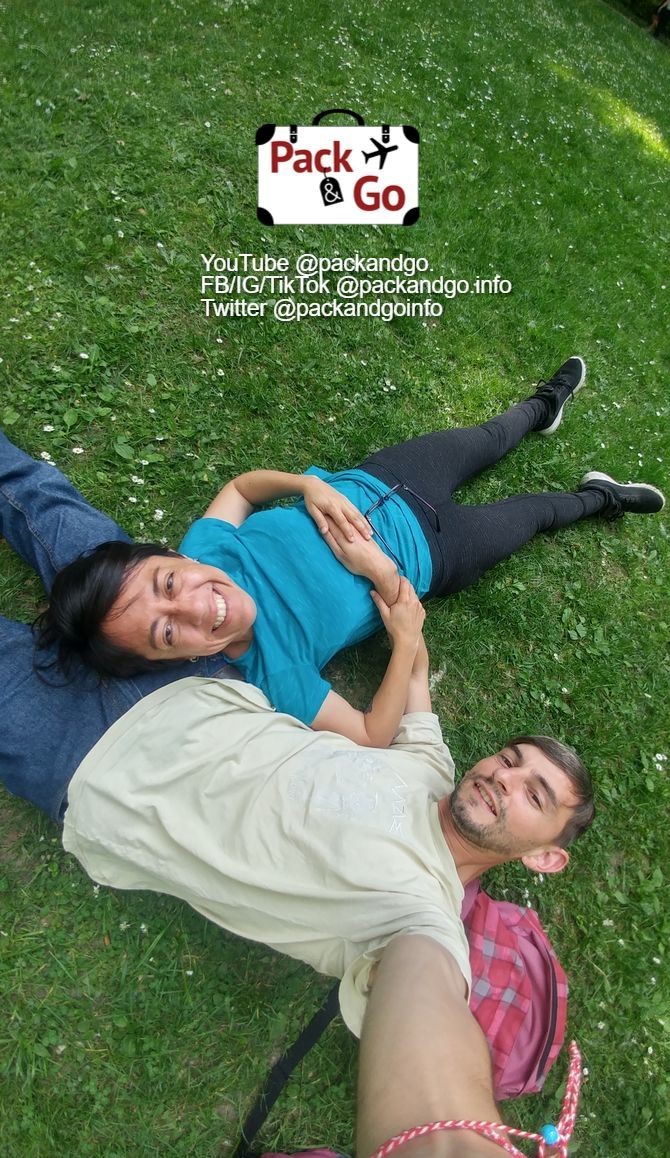
To write this top 5 parks in Budapest you should visit was challenging because there are many choices. But anyway, check our favorite and that can be a starting point for you during your next visit to this cool city.
| Follow PackAndGo.info at: | |
| YouTube | @packandgo. |
| @packandgo.info | |
| @packandgoinfo | |
| @packandgo.info | |
| TikTok | @packandgo.info |
Margaret island (Margit sziget).
Margit Island is a beautiful park and a famous landmark in Budapest. The island is 2.5 km long and it’s surrounded by the Danube River. As you see, from the beginning of this trip (Bulgaria-Romania-and Hungary now), the Danube has been a beautiful constant in the landscape.
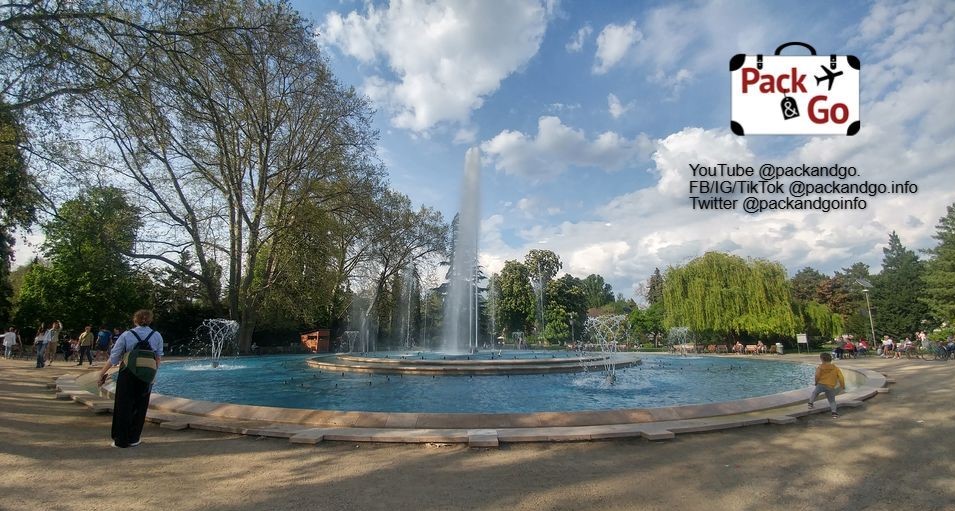
You can spend a complete day on Margaret Island doing something or just nothing. We visited this park after several days of daily exploration of Budapest. We were a bit tired so we took a day off hahaha Yes, holidays can be tiring haha We walked to Margaret Island to meet a Hungarian friend. We stayed for a while in the fountains that welcome you at the entrance. The sound of the falling water is very relaxing. We moved fast from there not to fall asleep.
We rented a quadruplet (bike) and it was very fun to drive around the park while scaring pedestrians with our ‘fast’ speed or maybe it was the way we drove hahaha After an hour of going around, we got back to the entrance for giving back the rental bike. Then we walked to the mini zoo to see some deer and birds.
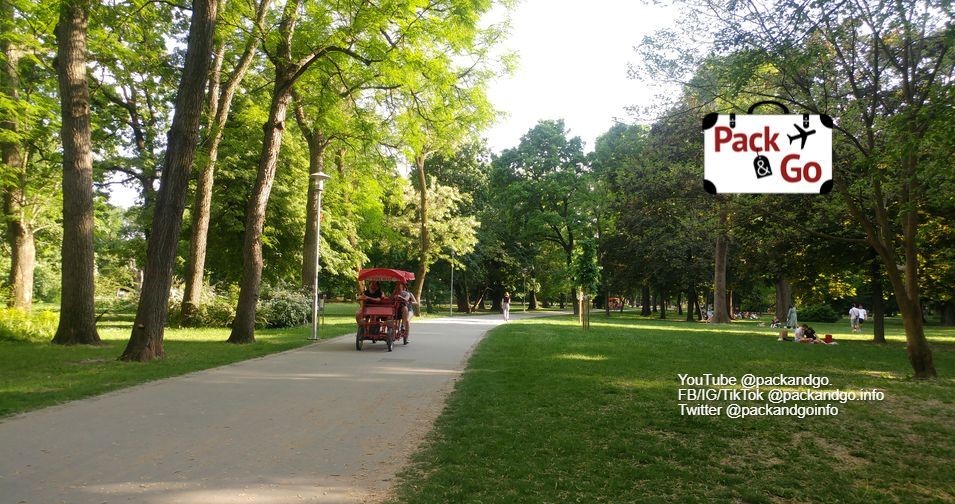
And then, grass time! Hahaha We chose a cool spot to lie on the grass. We were chatting a lot. Our Hungarian friend is a cool and fun guy. And suddenly, we fell asleep hahaha We laughed a lot when we woke up haha We were truly tired from the previous days. And Margaret Island is full of tall and robust trees. Under their shade, it gets very fresh and relaxing.
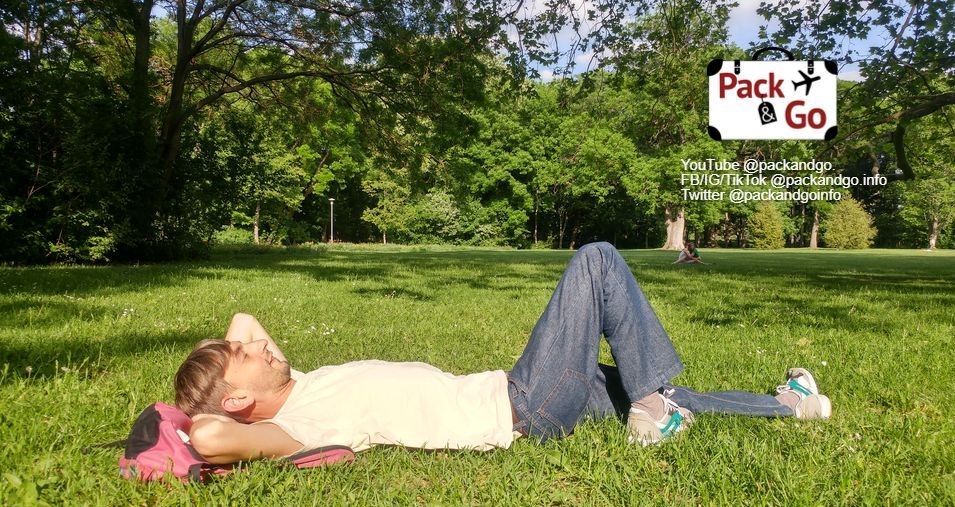
After this spontaneous nap hahaha We walked to the bar area. Yes! Margaret Island is a large place that includes not only bars but even a hostel (Island Hostel Budapest). That was a surprise for us. To book accommodation in such a park sounds very cool! Margaret Island is a great place and very well located. It can work very well for staying and exploring the rest of the city. We took the note to share it with you!
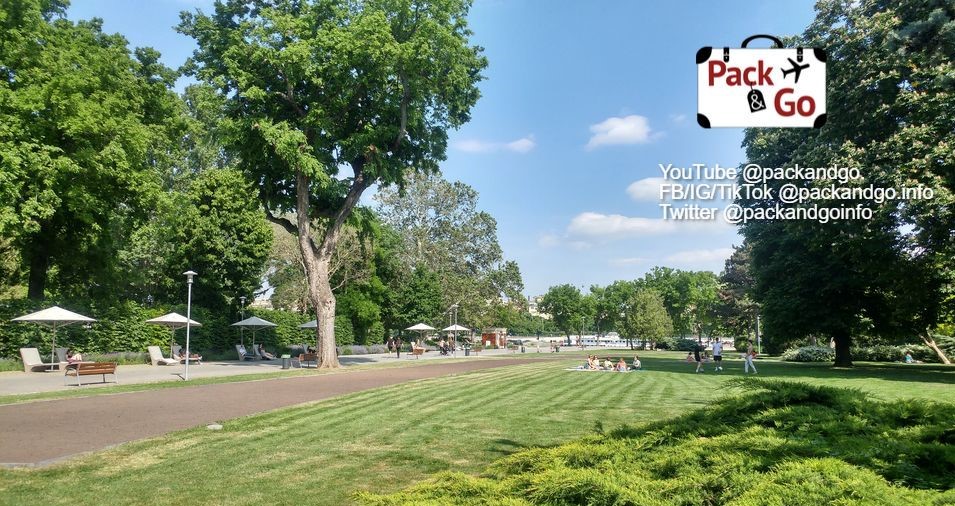
Later, we stopped on the terrace of a bar called Hippie Island. We drank some Hungarian beers while chatting and watching people enjoying around. Some were exercising on the running track, a 5 km circle all along the length of the island. Others were dancing, reading on the grass, playing volleyball, frisbee, badminton, etc.
By then, it was already around 5 or 6 pm. We walked to the entrance and the fountain's show was on. Margaret Island has this popular show in which there’s a music program that includes mostly classical music but also pop and rock music. The music is played for the fountains to dance in front of you. When it gets darker, lights turn on and the show gets even more visually attractive. The vibe is awesome!
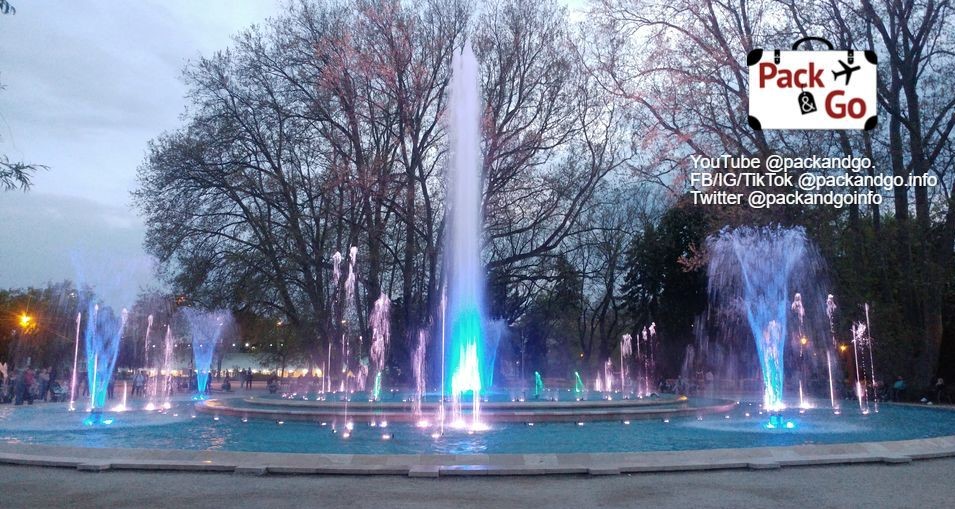
Young people and adults are there without hurry, chatting or in silence watching the fountains, either standing up or sitting on a chair. We left the park around 7.30 pm. And on the way back we had the chance to admire the evening face of the city. Budapest is a beautiful postcard to admire during the day and night!
Margaret Island is a park in Budapest you should visit! Car traffic is forbidden on the island for the safety of the visitors (pedestrians, and cyclists). In this park, there is also a Japanese garden, an outdoor thermal spa (only in Summer), the ruins of a Dominican cloister of the 13th century, restaurants, a rose garden, and a professional swimming pool regularly used by athletes to train. You can have a great picnic here and much more fun!
By the way, if you are curious how parks look like in the other end of the world, check out the best parks in Mexico City.
Budapest City Park (Városliget Park).
This is a different concept of a park. It covers a massive area. It’s considered the main park due to the big amount of attractions it includes. City Park is located on the Buda side and be sure you will be there sooner or later. Either because you directly want to explore the complete park or because you are interested in one of its attractions (historical buildings, monuments, museums, the zoo, ponds, green areas, playgrounds, etc.).
In the past, the City Park was an exclusive hunting ground for nobility. It became a public park, little by little. In the 18th century, the first trees were planted (1751). And until the 19th century, it became a public park. In 1896, Hungarians celebrated the millennial anniversary of the Magyars’ settlement in the country. The celebration boosted the building of different infrastructure, buildings, and landmarks. Example: The Gallery of Arts, the Comedy Theater, Heroes’ Square, the Grand Boulevard, Millennium Underground, and Andrássy Avenue. The City Park (approx. 520,000 square meters) was the main place for the celebration.
So nowadays, visitors have many places to visit in the City Park. For sure you need more than a day to visit everything and very comfortable shoes. Of course, public transportation is available all around the city. Transportation in Budapest is affordable and efficient. And you may need it to visit the City Park.
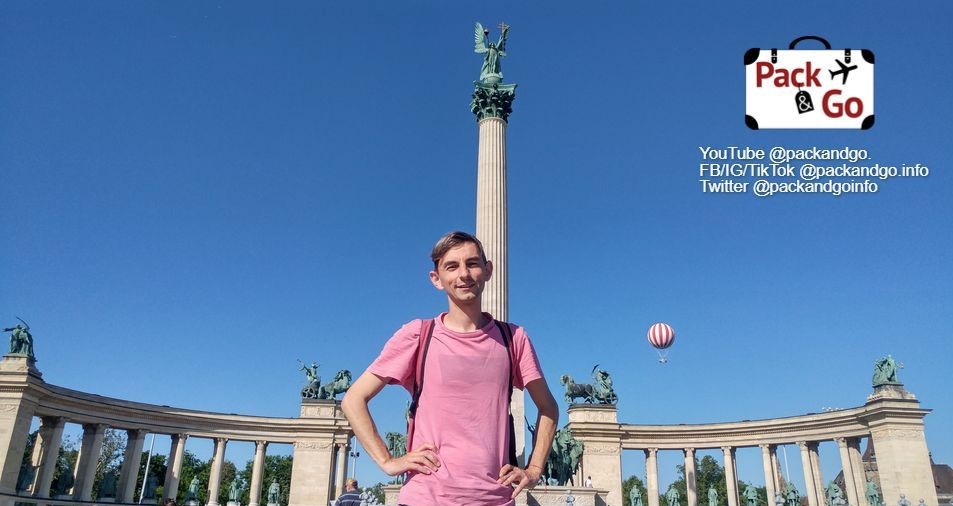
Heroes’ Square. This is a place for sure you don’t want to miss. It’s a great Budapest landmark. It´s the main entrance to the City Park. It’s located at the end of Andrássy Avenue. It’s full of monuments, sculptures, Hungarian pride, and history.
Vajdahunyad Castle. This castle was a project for the 1896 Hungarian celebration too. The castle’s design was inspired by a Transylvanian fortress. Baroque, Romanesque, and Gothic details were added to represent architectural styles from all over Hungary. It was finished in 1908. In this castle, you also can see the Ják Chapel, the Anonymous Statue, the Gatehouse Tower, and the Apostles’ Tower.
Agricultural Museum. It’s hosted on one side of the Vajdahunyad Castle. It tells the history and evolution of agriculture in Hungary, including other activities like fishing, planting, forestry, and animal domestication.
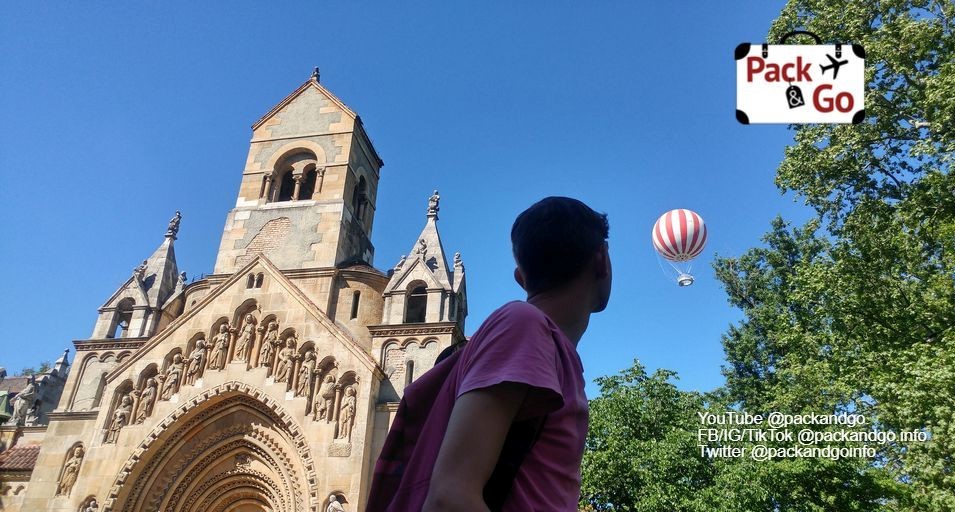
House of Music. It was opened in January 2022 in the heart of the City Park. This is a modern building that houses the history of Hungarian music and its representatives (composers, musicians, etc.).
Museum of Ethnography. This is a new museum. It just opened on May 23rd, 2022. Its design includes a roof garden of more than seven thousand square meters.
Széchsyi Bath. This is a very popular place in the city. Thermal baths have a deep tradition all across the country. Széchsyi Bath has 15 thermal pools indoors. The water is described as high in magnesium, calcium, and hydrogen carbonate. And there are 3 pools outdoors. People go to have fun, a refreshing and relaxing day, or to heal specific pains with hot and mineral water. Don’t forget your swimming suit, flip-flops, and cap, if you want to swim. Széchsyi Bath is open the whole year and on Saturdays, they host club nights. It sounds fun, doesn’t it?
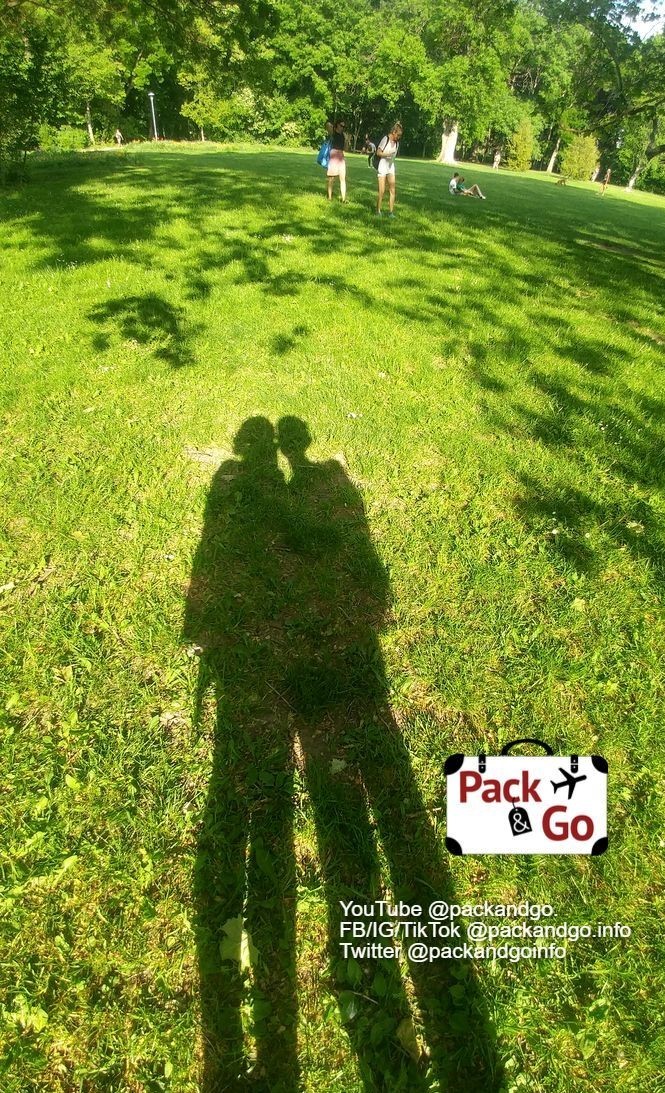
Budapest zoo. It was opened in 1866 housing 500 animals and it’s still there for you to visit.
City Park Ice Rink and Boating Lake. This is a large area of 12,000 square meters located between the Vajdahunyad Castle and Heroes Square. It was opened in 1870 and it became one of the oldest ice rinks in Europe. During Winter, people can skate there. And in the Summer, it becomes a pond for boating or hosting different events. It’s forbidden for doggies but we saw many jumping into the water to have fun and to refresh a bit hahaha We will keep their secret!
You also can visit the House of the Hungarian Millennium and the different playgrounds. Just to give you a reference, the biggest playground is around 13,000 square meters. There you will find different attractions, like the air balloon you can take for having a panoramic view of the beautiful Budapest. It goes 150 meters above the ground and it started operating this 2022.
A picnic can be a great idea to rest a bit and recharge energy to continue exploring Budapest City Park!
Elizabeth square (Erzsébet tér).
On the Pest side, you will find a beautiful, green, and relaxing park, called Elizabeth Square. It’s located in the historical center of the city, in the Lipotváros district. Going by metro, the closest stop is Deák Ferenc tér. It’s much smaller than the previous ones on this list, but it’s a very nice spot to spend a great time. You can enjoy it being alone, with friends or family.
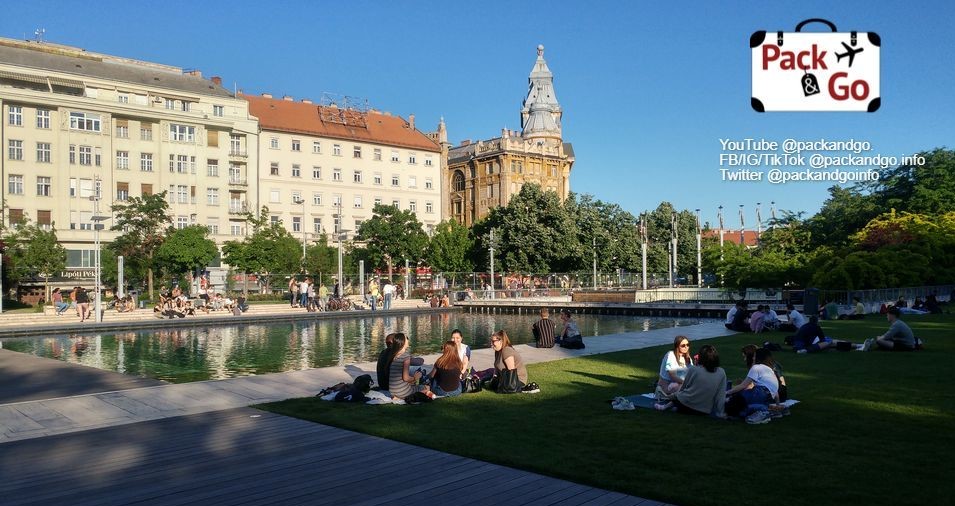
The park has two parts, one is more traditional. You will see The Danubius fountain there. And the other is more modern and its design includes tables and benches for people to gather, have picnics, etc.
In the past, this area was the main Pest market. The name of the park honors the wife of the Habsburg Emperor Franz Joseph. She was Elizabeth but she had a popular nickname, “Sisi”. During the communist time, this name was changed to Engels square and Stalin square. When communism ended, the original name got back, Elizabeth square.
We discovered the park while walking in the center. We saw there was a small souvenir market so we checked the stuff. The prices were ok so we bought some magnets and key chains. Then we saw a chimney cake shop and we directly bought one because we love it! We went around while eating our chimney cake and we saw benches, nice green areas, and the eye of Budapest! Yes, the big Ferris wheel is there. We saw it from different points in the city and finally, we found it there! It’s in Elizabeth square where you can jump into it to have some fun and an alternative view of the city. Its highest point reaches 65 meters.
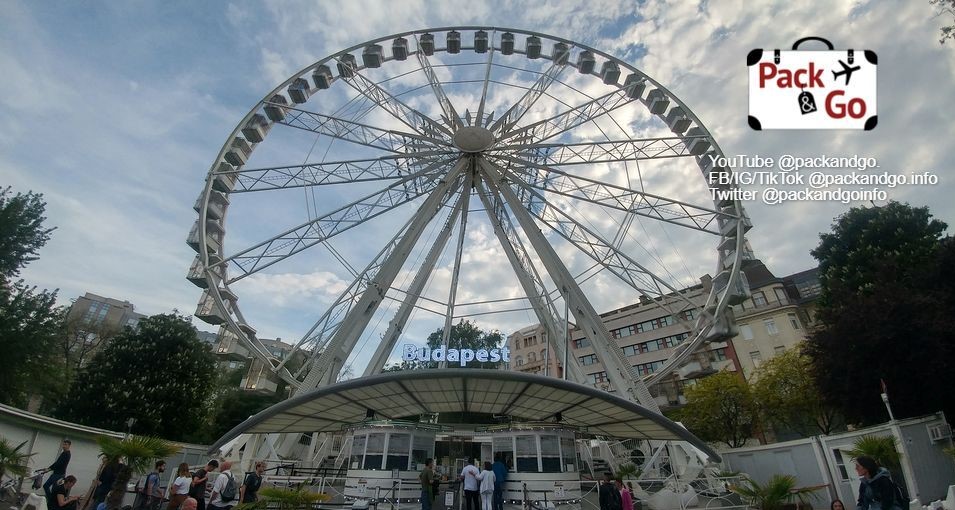
After that, we saw a couple of restaurants, ice cream shops, a fountain, and a sort of pool. We got interested so we got closer but we didn’t see people trying to get into the pool. Many young folks were around lying on the grass or sitting on the benches while drinking beer, and other drinks and chatting with friends. The environment was very cool. It was like being at a party but it was not such a thing. Officially it’s forbidden to drink on the street but guess what? At least in the parks, a lot of people were drinking alcohol. And Elizabeth square was not an exception. The good news is that the police don’t bother you if you don’t make trouble. Fair enough!
It’s a place full of locals and we liked that because the park is a part of their lives. A place where Hungarians finish the day after work, date, relax and have fun. We talked with some guys and they recommended us to stay or to get back in the evening. We couldn’t do it that day, but we got back the next day in the evening. It was very cool! Frequently, during the evening, there’s live music, so it gets more fun.
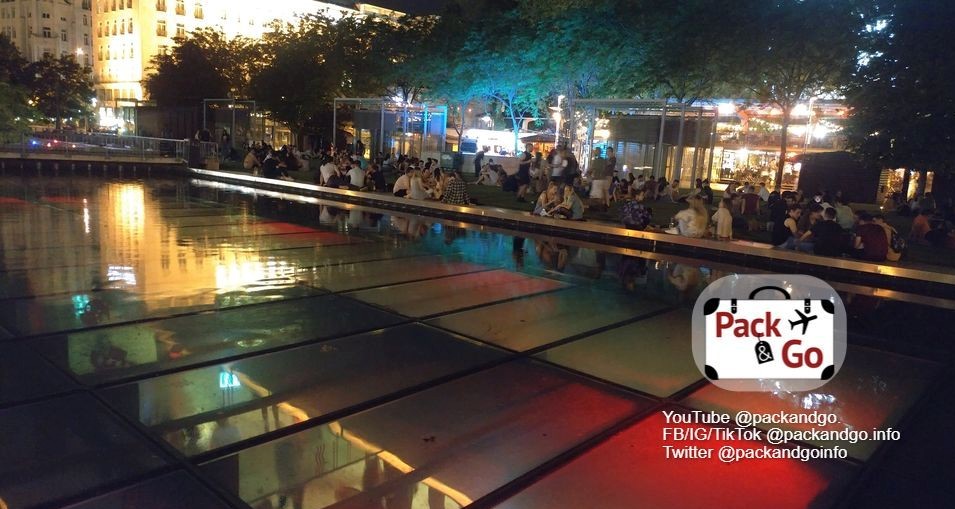
And Hungarians are practical people so we imitated them hahaha They arrive at the park already well prepared, with their wine bottles, beers or the alcohol they prefer, cups if necessary, snacks, and even their favorite music. Like this, they don’t have to worry about the outfit or budget for accessing a bar. And believe us, during the evening and night, the vibe and fun in this park are pretty much what you could expect from a bar. With the big advantages that people enjoy in more free, comfortable and open space. Smoke from cigarettes doesn’t suffocate you. You don’t have to scream to beat the music’s decibels and the rest of the noise to have a conversation.
That night we discovered what the sort of pool was! There’s a bar beneath the park so this pool has a transparent ceiling to create the effect of an aquarium. It was fun because after some beers there, we got close to the pool and we had a vision hahaha We could see through the water some neon lights and many folks dancing and ordering drinks from a bartender. I thought I was too drunk but M also saw it, so everything was fine. We laughed! You can go to the bar if you feel like it.
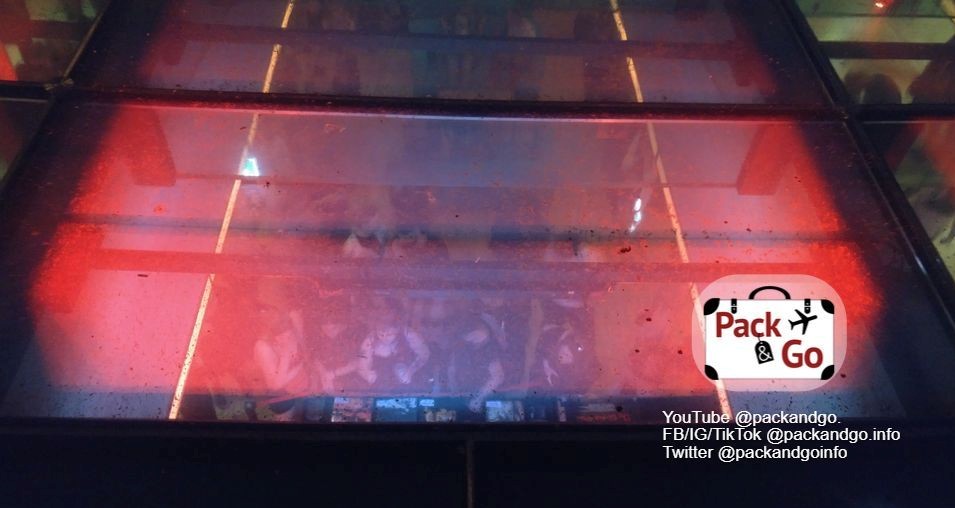
Since we are staying longer in Budapest, we have gotten back to Elizabeth square several times. We like it a lot! During the day and night. The place is safe and in very good condition. We recommend you to visit it without a doubt. Cheers to Elizabeth square! It deserves a toast haha
Városmajor park.
Városmajor is a large park located on the Buda side. It’s another nice space for people to relax, exercise, have picnics, gather, and have fun. Its concept follows the traditional concept of the park. Visitors have different sports facilities to train, like outdoor gym, basketball or tennis courts. The paths are wide and there’s a running track so pedestrians and runners can enjoy. There are many playgrounds.
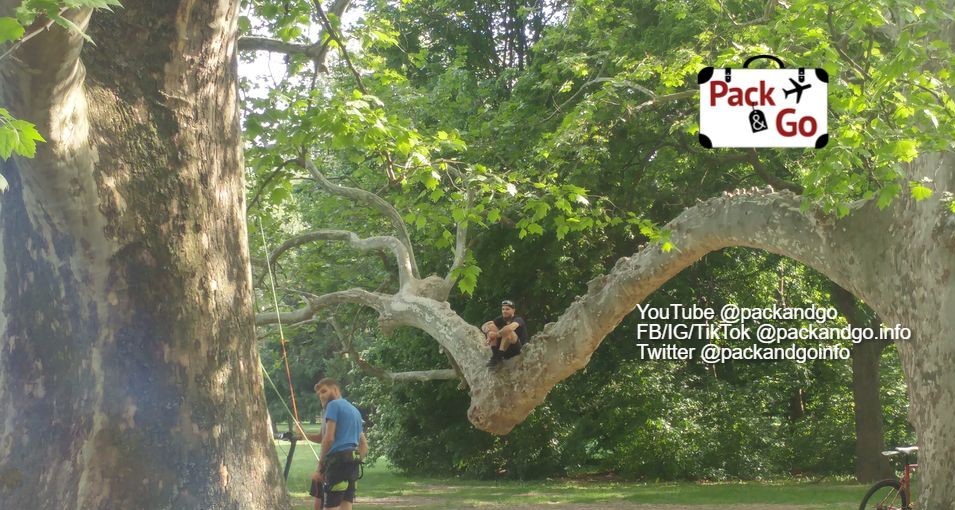
You will find sand games, musical instruments, and more nice stuff for kids to enjoy. Green areas are well maintained so you can lie on the grass to take a nap, sunbathe, or just watch people around.
Besides, the Városmajor has an open-air theater. Our accommodation is not far from here. Last weekend we visited this park and we found a pop music concert. There’s space enough for people to sit or be around the open-air theater enjoying the show.

It’s a quiet park we used to rest in after walking around Buda's side. We felt motivated to exercise. Maybe because of the outdoor gym or perhaps, it was the remorse after eating lángos and chimney cakes without limit hahaha
Millenáris park.
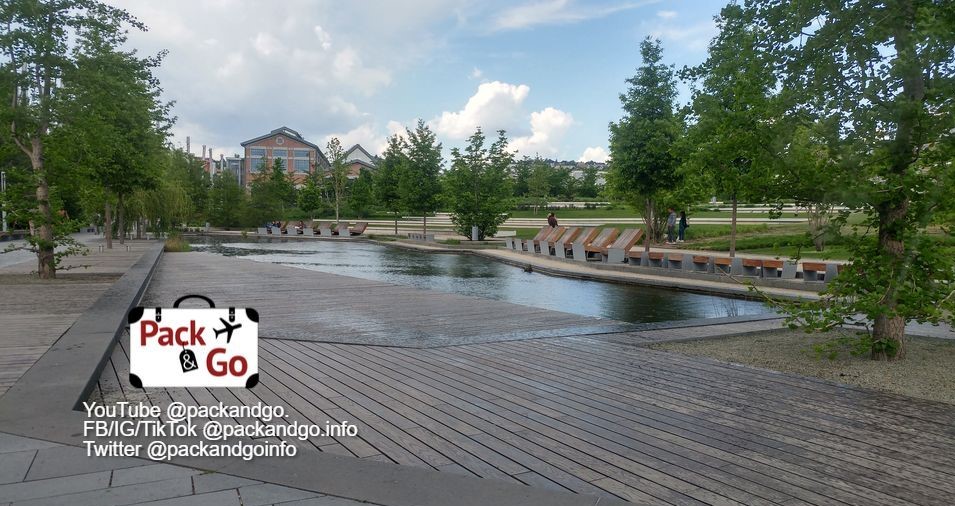
Millenáris is a different, industrial and modern type of park. Design is the accent here. It’s on the Buda side, in the heart of a residential and commercial area. Millenáris park was opened in 2001. We discovered it on a rainy day. When the rain went stronger we were surrounded by trams and other vehicles, but not a single place to hide. Then we ran to the Mammut mall that was nearby. The name of the mall fits well with its size. In a moment, we took an exit thinking it would lead us to the street. But not, we appeared in a very nice garden. We thought it was a green innovation of the mall, but not, we were at Millenáris Park. It’s kind of hidden in the streets of the city. It was built in the former estate of a factory called Ganz Works, a manufacturer of electrical and mechanical parts.
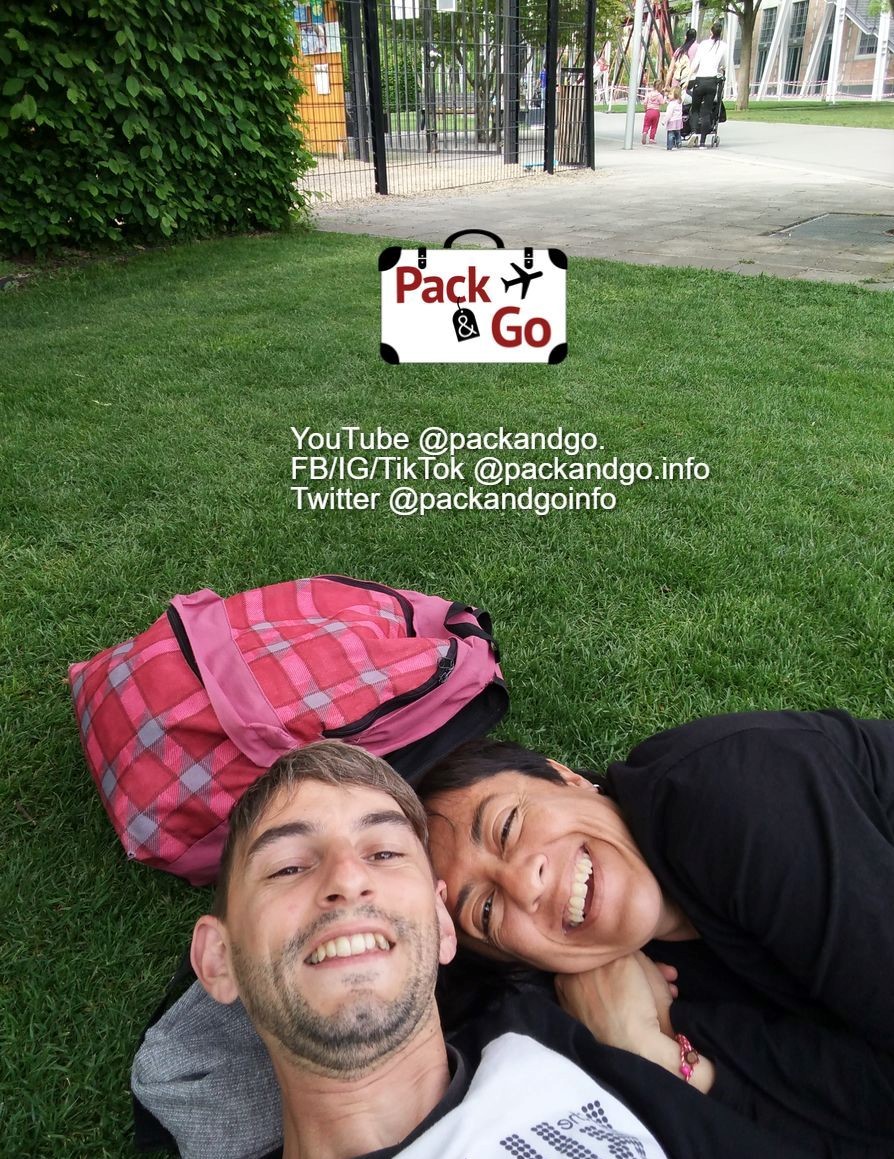
The park looks like a pretty garden with well-defined pathways and areas for specific activities. Stone, glass, and metal are materials you will see around, interacting with the natural elements (trees, grass, water). It’s divided into two parts. The green area and some buildings. Both are used to host different events and exhibitions. In the green area, you will see the playground and a pond, a big Japanese garden surrounded by comfortable benches to lie on and take sunbathe. Many people stay there watching the fish.
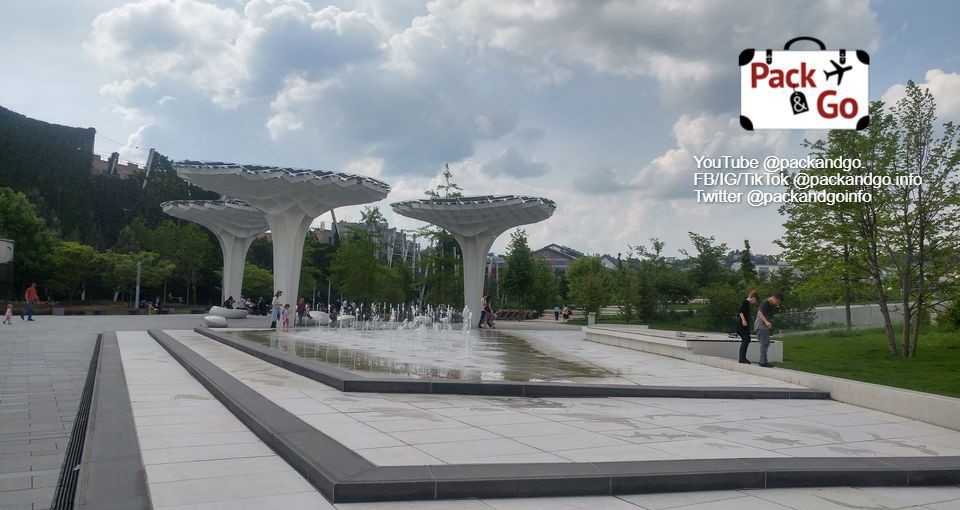
There are still elements of the machinery that was used in the factory. They were kept as industrial ornaments that evoke the past of the estate. It’s a nice and different park.
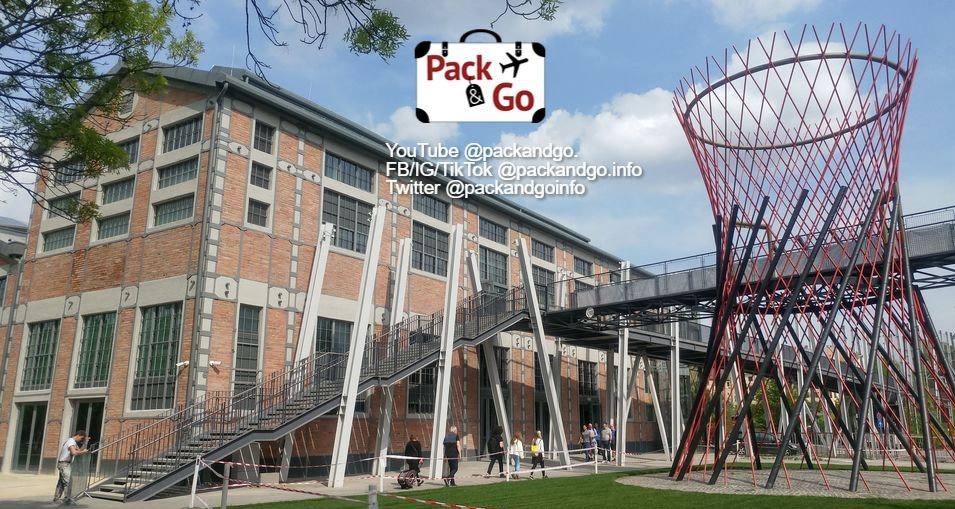
Conclusion
Budapest is a green city with plenty of parks to enjoy. Only as a sample, now you know these top 5 parks in Budapest you should visit. Go to more than one so you can feel the differences between them.
Hungarians seem to like a lot to be outdoors. It’s very nice to see how at any time, there are people at the parks exercising, walking their dogs around, gathering with friends or workmates, having picnics, studying, playing music, dancing, drinking, celebrating birthdays, etc. This gives Budapest a very alive, active, and friendly vibe. Parks are a great place to meet people if you feel like it.
Check more interesting articles about Budapest, Hungary:
Avoid the Pest side of Budapest at all costs! Here is why!
5 Reasons to Fall in Love with the Buda Side of Budapest: An Insider's Guide
| Follow PackAndGo.info at: | |
| YouTube | @packandgo. |
| @packandgo.info | |
| @packandgoinfo | |
| @packandgo.info | |
| TikTok | @packandgo.info |
- Details
- Written by: Gianna Esquivel
- Hits: 1808
Time in Budapest is awesome! We love traveling slowly because we can balance our schedules. Some days, we explore as if there is no tomorrow. We finish those days very happy but physically destroyed, blister-feet to say the least. Others, we can dedicate time to only contemplate a landscape or people around us from the bench or the grass of a park. Sometimes, in cities like Budapest, we like to walk without a fixed direction and we just merge in with the first bunch of people we find. We go where local people go following their pace, listening to languages we don’t understand much, smelling people’s favorite perfumes, and pleasant and bad smells around; feeling the hot, the wind, or the rain, and filling our eyes with all types of images, colors, and textures. It is fun to stop once all the rest have already found their destination and it is only us again!
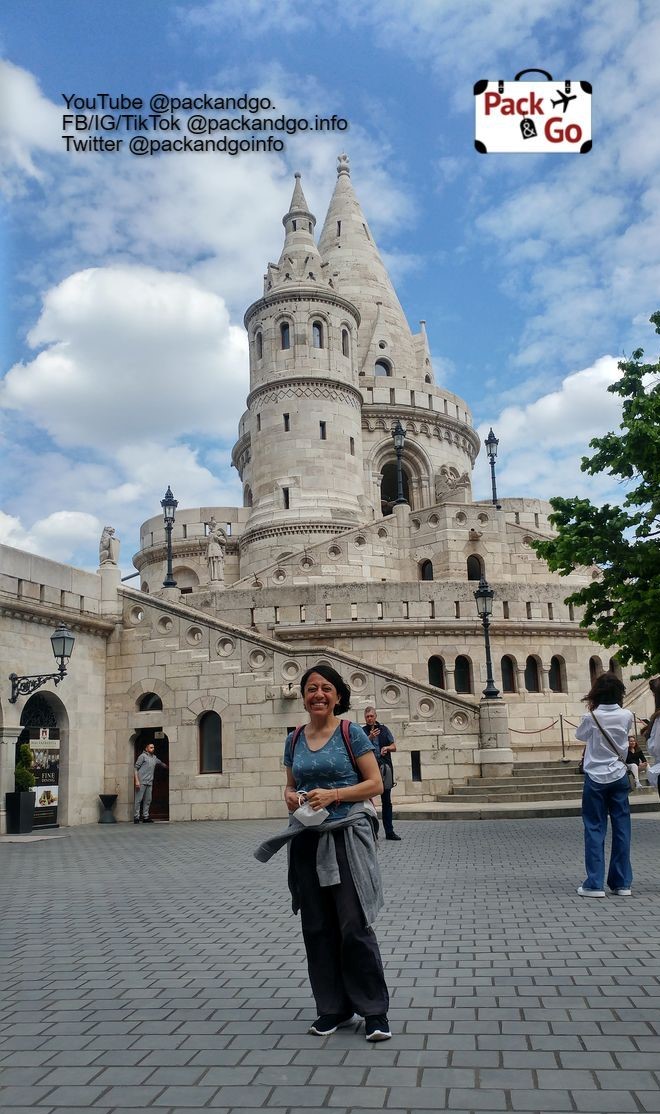
The Hungarian friends we are visiting live exactly in the Buda side of Budapest. We have shared very nice walks on this cool and calm side of the city. Besides, with the time we have spent here, we are feeling it a bit like home. Now, we already have our favorite bakery, ice cream shop, coffee place, chimney cake shop, park, etc. It is very easy to fall in love with Budapest, guys!
To write about everything here could be massively long, so we preferred, first, to dedicate a complete article only to Pest and now, to Buda. And then, give you 5 reasons powerful enough to visit this side of the city and make you crave more! This short but lovely selection can be your starting point or a guide in case you come for a day or a weekend.
What is the difference between Buda and Pest?
Only separated by the Danube, Buda, and Pest shape the beautiful Hungarian capital, Budapest. But every side has its personality. Generally talking, Pest is flat and Buda has hills, so you can enjoy nice panoramic views of the city.
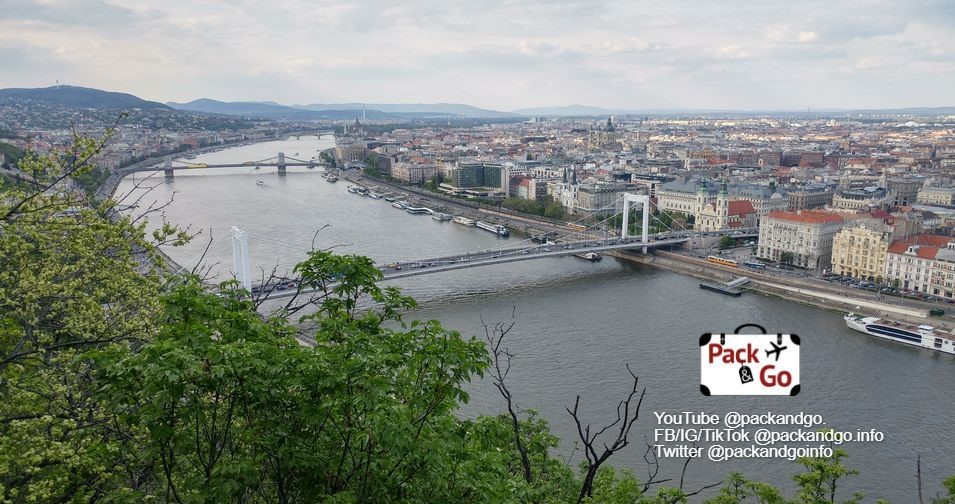
Pest is the side of the city where you can find people, fun, bars, and movement all day and at night. Buda is more relaxed, greenish, and ornamented with that imperial touch that makes it look like a scene from a fairy tale. Buda is a perfect escape from the city within the city!
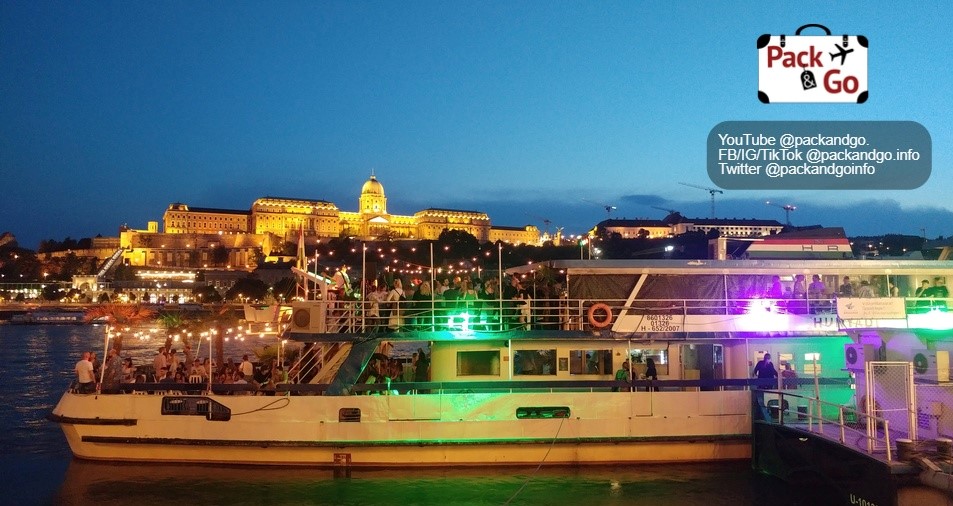
You can know more about Buda and Pest history here.
| Follow PackAndGo.info at: | |
| YouTube | @packandgo. |
| @packandgo.info | |
| @packandgoinfo | |
| @packandgo.info | |
| TikTok | @packandgo.info |
5 Reasons to Fall in Love with the Buda Side of Budapest
Let’s get started:
Fisherman’s Bastion
The Fishermen’s Bastion is a place you must visit. It is a huge and magical place. The Bastion's very long, wide, and meandering stairs drive you to nice balconies, columns, towers, huge statues, and a great terrace. Be sure that wherever you look you find something nice and interesting to see. There is history here but also a very pleasant beauty for your senses. We love this place! And we can bet you will love it too. You don’t have to be an architect or an art expert, the Fisherman’s Bastion will catch you totally! And if you are such an expert, its neo-romantic and neo-gothic style will captivate you!
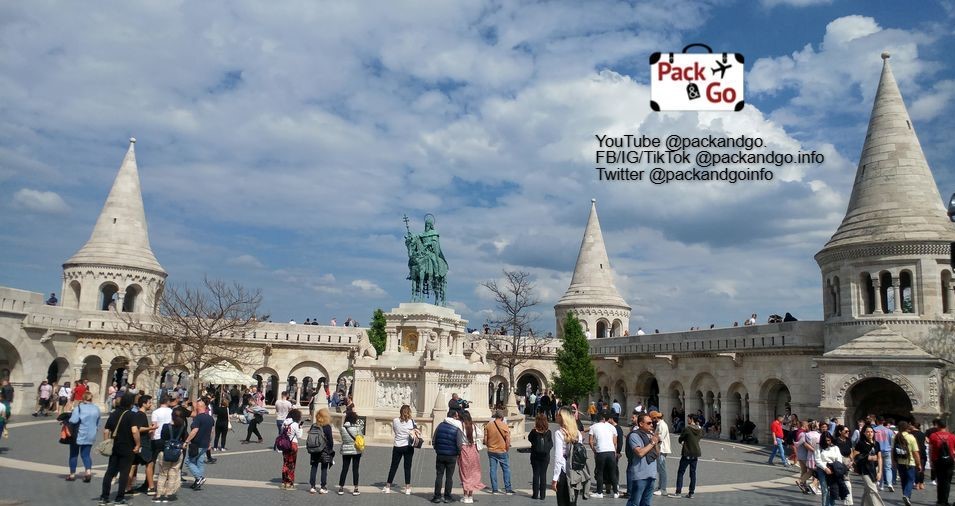
We recommend you explore it as much as possible because there is a lot to see. You will feel like walking into a fairy-tale castle rather than in a fortification. And once you enjoy it, you still have a lot more to see around. From here you have some of the most amazing panoramic views of the city, the Danube, and the Parliament included.
The Fisherman's Bastion was built in 1895 and was named after the medieval guild of fishermen who were responsible for defending this section of the city walls. The terrace is made up of seven towers, each representing one of the seven Magyar tribes that settled in the Carpathian Basin in the 9th century. You can admire during hours the stunning architecture and take in the views of the city from the terrace.

On this terrace, there is a small café that can be considered a tourist trap. Yes, it is nothing "wow" but it is easy to fall there for a beer, coffee, or simple sandwich as an excuse to admire the astonishing view.
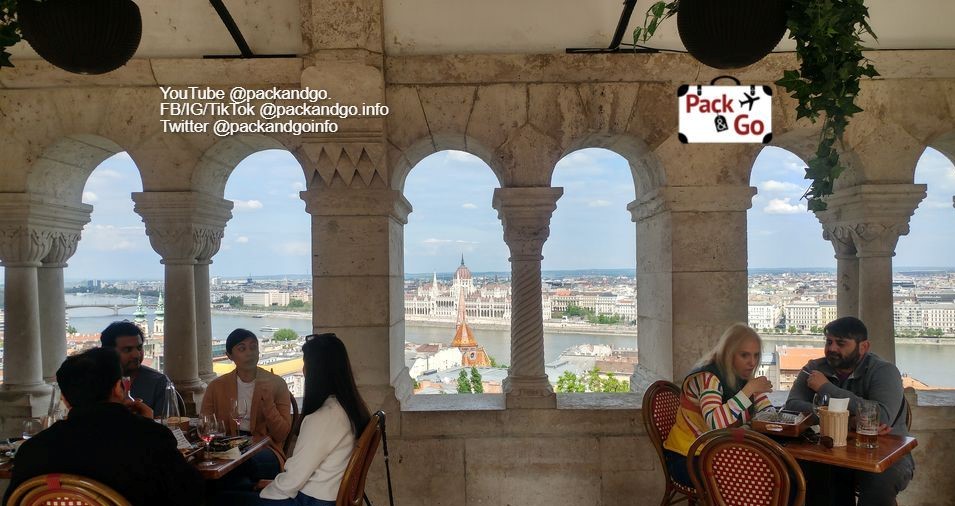
Buda Castle
There is no fairy tale without a castle, so Buda castle is one of the most famous landmarks of Hungary and has been listed as a UNESCO World Heritage Site. The castle has a rich history dating back to the 14th century and has been rebuilt multiple times. It houses several museums such as the Hungarian National Gallery and the Budapest History Museum, which showcase the country's art and history. Again, this is a place that, besides its architecture and value, will give you great panoramic views of the city to enjoy from the castle's terrace.
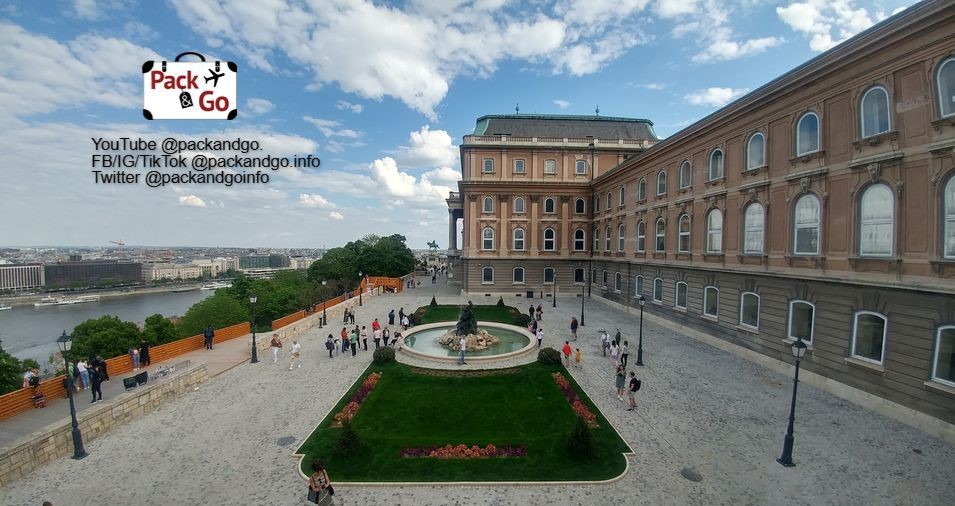
If you are into museums, you have a lot to see there. If not, you still will love the calm atmosphere and walking on the grounds of the castle. These spaces sometimes host gastronomic and wine festivals. Depending on the season, you can find more or fewer extra activities there. You also will find different statues, monuments, and stories. For instance, the “Turul Modár”, is a bird that looks like a falcon or an eagle. It is the protagonist of a myth that says it impregnated Emese, the grandmother of the military commander who led the Magyar tribes into the Carpathian Basin around AD 895. His name was Árpád.
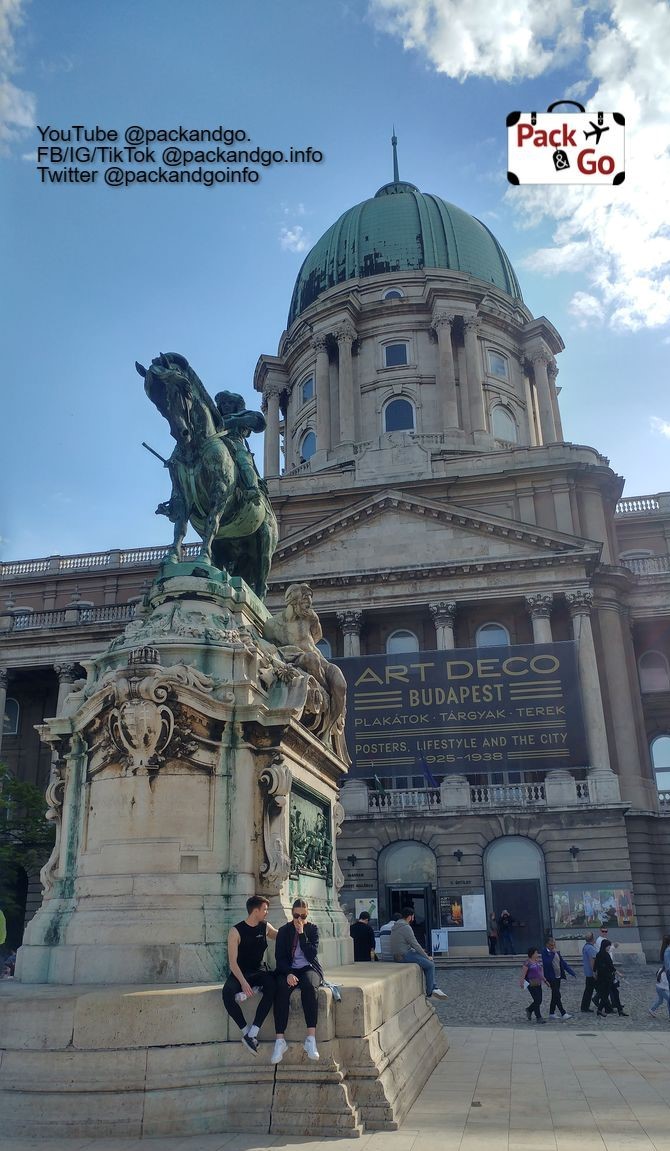
Matthias Church
The Mattias Church is an impressive building, a Roman Catholic church, located in the heart of the Castle District of Buda. It is a cool example of Gothic architecture and has a rich history dating back to the 14th century. Once, it was even a mosque! Ottoman Turks used it as a mosque for 150 years. The church has undergone several renovations throughout the centuries and has been used as a coronation church for Hungarian kings. You can admire its intricate frescoes and stained glass windows, as well as the ornate altar and pulpit.
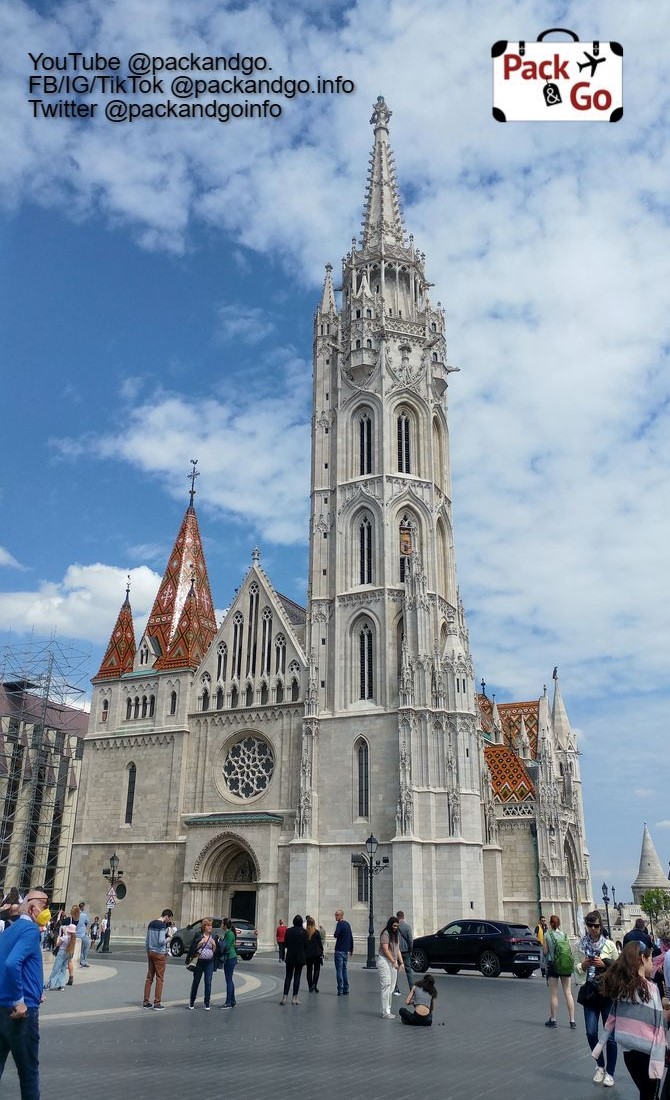
We liked a lot the ceramic tiles it has on the top. We were said, they came from a famous factory called Zsolnay. These tiles were a modern addition (19th century) and a great touch in our opinion. Now it is a key part of this building’s personality. There is a small museum inside but what we enjoyed the most was the building itself.
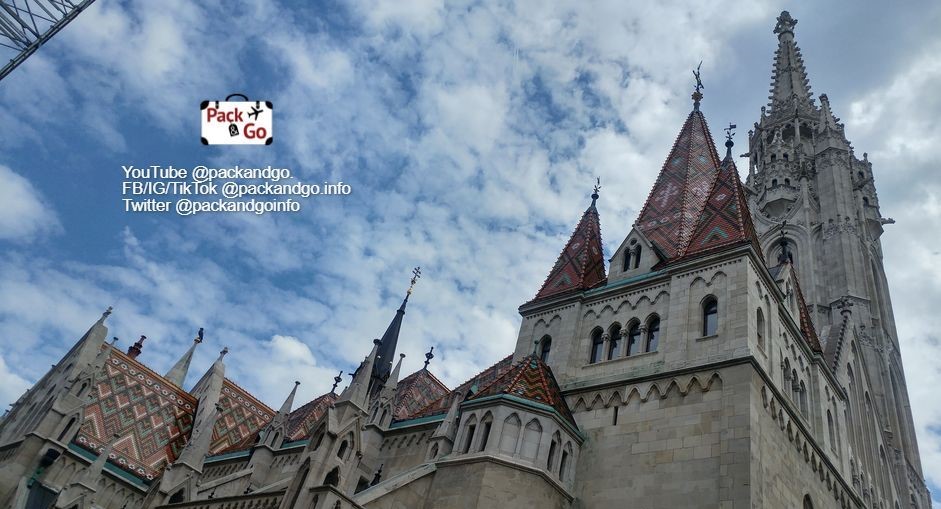
First, it was dedicated to Our Lady or Mary, but in the 19th century, it was named Matthias Church. It honors Matthias Corvinus, a Hungarian king who promoted the Renaissance (Italian) in Hungary.
Gellért Hill
Now we will push you to climb! Yes, you should climb the Gellért Hill (235 meters high) because the exercise is good for the body, the surroundings are very pleasant, and the views of the city, its bridges, and the great Danube are amazing!
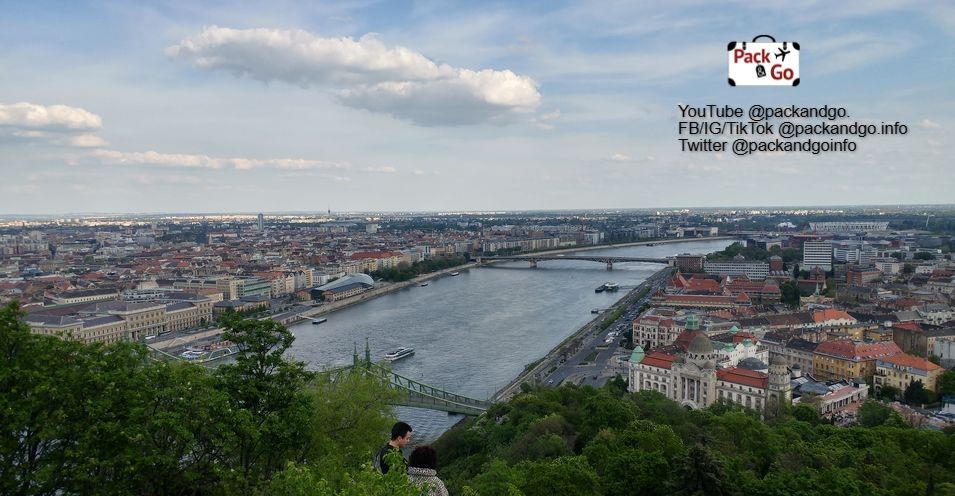
You can take either a longer but easier route that starts on a pathway close to the Géllert Baths or you can go to the stairs nearby the Elizabeth bridge. This hill was named after Saint Gerard or Gellért. History says that in the 10th century, he was put inside a barrel and thrown down from the top of the hill. It was his punishment for attempting to convert pagan Magyars to Christianity.
This calm and nice hill houses important landmarks like the Géllert’s monument right at the hill’s bottom, the Liberty statue erected in 1947 to commemorate the Soviet Liberation of Hungary, and the Citadel, a fortress built in 1851.
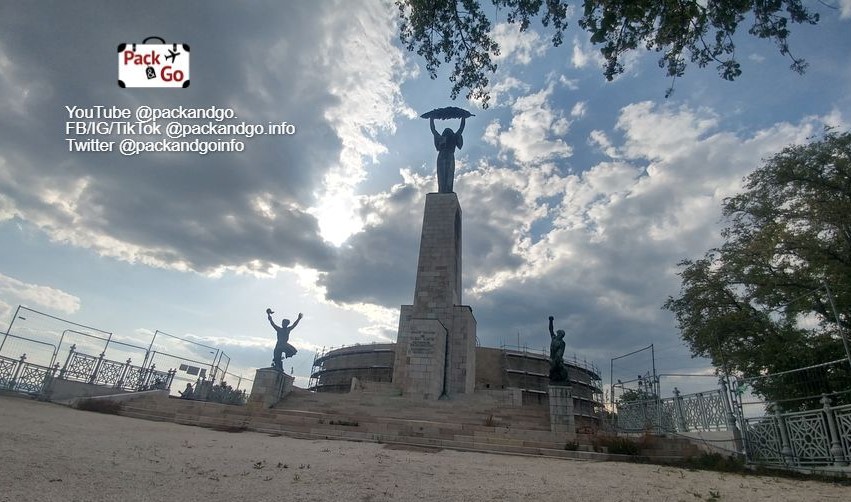
People go there during the day but also at night. You can reach the top by tram or bus, but we recommend you climb it to the top! The panoramic views will be a rewarding experience for you!
Rudas Thermal Bath
The Rudas Thermal Bath is a historic bath built in the 16th century during the Ottoman occupation of Hungary and has been in use ever since. The bath offers several pools, including an octagonal pool with a dome, and is fed by natural hot springs. Many locals and visitors go looking for the healing properties of the thermal waters or only for relaxing time in the cool setting of the bath.
Thermal baths are a tradition deeply ingrained in the Hungarians' lifestyle. Everywhere you go in this country, you will find thermal baths, some working during the whole year. This tradition started in Roman times when Romans discovered the healing properties of mineral waters. Later, the tradition did not stop but the opposite, and during the 150 years of Ottoman rule, some of the most stunning bathhouses were constructed.
Now, there are newer and modern complexes but we felt more attracted to the traditional and oldest. Honestly, during our first visit to Budapest, we skipped this experience because it looked to us like a visit to a crowded water park. But through time and knowing more about Hungary and its people, we got that is a different experience. Nowadays, baths include steam rooms, saunas, and regular cold pools too. Some truly look like water parks, while others keep a bit of past essence so you feel like taking part in a sort of ancient ritual. Their architecture is interesting and a trip to the past.
People go to relax or heal in the hot mineral water, some gather with friends in these places, have a pleasant and quiet time for themselves, play chess on floating chessboards, or have a party there. Yes! You also can go to a party or a dating party to a Hungarian bath. Szechenyi Spa § Baths is popular due to its “sparties”, organized especially on Summer nights (Saturdays). So it seems there is a Hungarian thermal bath for every taste and purpose.
We went to Rudas Thermal Bath. Honestly, we hesitated and planned a lot for this visit. We were warned that pools could be crowded during the weekends, but it can happen at any time. Being our first trip during the current pandemic, we did not feel attracted at all by the idea of being like sardines in the steamy water.
So we checked prices, conditions, and schedules online and made a combination that luckily worked! We chose a coed bath to enjoy the experience together (you can choose a bath for men only or women only so nudity is the etiquette). For a coed bath, a bathing suit is a must. And we went on a Thursday (working day). We arrived punctually at 1 pm when the second shift of the bath’s schedule started that day, betting that at 1 pm, people should be busy at work. Besides, entrance fees are cheaper than during the weekends.
Luckily, there were only a few other humans there, no more than six, and that relaxed us. There are six pools and the water has different temperatures. We went directly to the original baths (indoor). We had seen many pictures of it on the Internet. To get into that place is “wow”, guys! These baths date back to 1550! Its original shape has changed through time, there have been some additions, renovations but honestly, you walk into centuries of history there. The most attractive spot for us so far was the octagonal pool, with the dome sustained by those pillars (8). The water there comes from the ground and it has sulfate, sodium, and calcium magnesium-hydrogen. It is like a set for a movie! And that creates a unique atmosphere and boosts the experience a lot!
People in charge of the place told us this mineral water helps to treat neuralgia, disc herniation, arthritis, calcium deficiency in the bones, and degenerative joint diseases.
Hopefully the two hours we spent there improved our health or rejuvenated us a bit! Hahaha. What we know for sure is that it was a relaxing and different experience. After a short lapse, we got used to the funny smell (like sulfur) around haha. In the beginning, we chatted between us, as quietly as possible because it was very silent. But soon after we stopped talking, we were just feeling the hot water, and almost falling asleep haha.
It is hard to quit and you can have a relaxing full day there because there are different amenities you can enjoy. The newer pools, sauna, different types of massages (aroma, refreshing, peeling, water, etc.), pedicure services (medical and spa), and the drinking hall where you can try the popular “drinking cures”. There are 3 choices, the Juventus water that supposes to help premature aging and high blood pressure. The Hungária is believed a water healer for stomach and kidney issues. And the Attila which is water from the spring considered the richest in terms of minerals.
We only spent two hours there because suddenly, a big group arrived at our pool. Currently, we can’t be surrounded by many people or too close without freaking out. Besides, M was already hungry! Hahaha Not strange!
You must try thermal baths in Hungary at least once. Don’t forget to take your sandals and towel, and swim cap for the pools. In Rudas and most baths you can buy or rent these items but better if you take yours. That night we slept like babies!
Conclusion
These are 5 reasons to fall in love with the Buda Side of Budapest. Buda is very charming! A great complement for the Pest side. There is no way you don’t crave more time in the beautiful Hungarian capital.
| Follow PackAndGo.info at: | |
| YouTube | @packandgo. |
| @packandgo.info | |
| @packandgoinfo | |
| @packandgo.info | |
| TikTok | @packandgo.info |
Follow our trip and remember, if you have the chance to travel, don’t hesitate, just pack and go!
Check more cool articles about Budapest, Hungary:
- Details
- Written by: Gianna Esquivel
- Hits: 2262
As we told you before, it is our second visit to Budapest, Hungary and we have been here for weeks already. We have spent complete days exploring, chatting with our friends, and some days doing nothing but watching people or the Danube from different angles. We were discussing what to tell you about this beautiful capital without writing millions of words. It is hard! You could easily spend months here and discover at least one nice spot or interesting thing to do every day. That is why when you search on the Internet “what to visit in Budapest?”, you get results like “50 spots to visit in Budapest” or “30 things to do in Budapest”.
We decided to push ourselves to choose only 5 places on the Pest side, the 5 reasons for our addiction to this side of the Hungarian capital. If you don’t want to get addicted to Budapest, better don’t go! Avoid it at all costs! Once you visit the following spots, you will crave being longer there, for getting back as much as possible. Well, you have been warned so here we go!
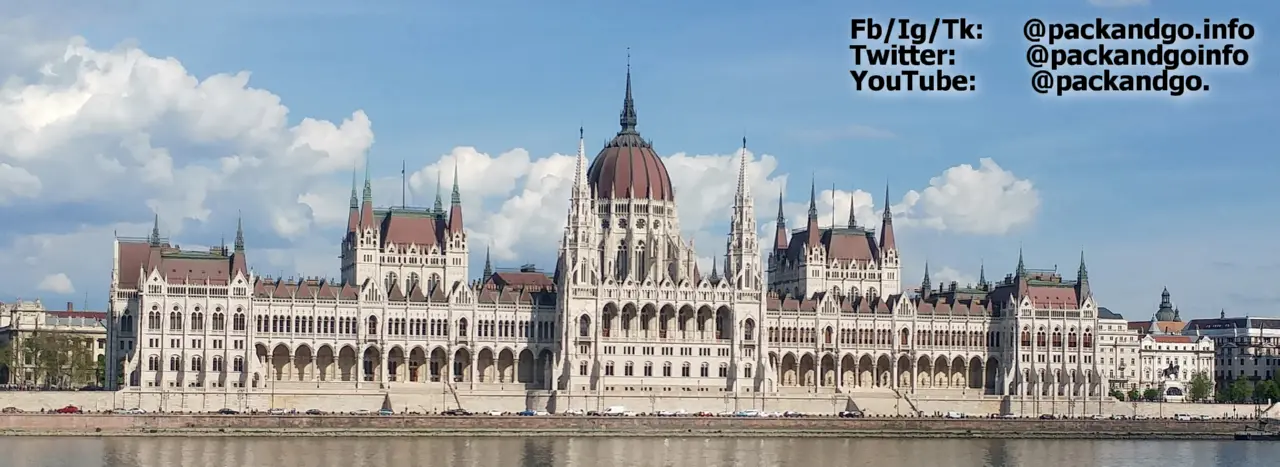
Is Budapest one or two cities?
Budapest is the gorgeous capital of Hungary (one city) and it includes two very popular sides separated by the Danube river. Pest is on the East, while Buda is on the West.
In the past, these two settlements, Buda and Pest, were not united. And they were not only two but three settlements. There was also a place called O-Buda or Obuda, it was a market town. The names of Buda and Pest already existed but details about their origin are not easy to track. The idea of unification first appeared in the 1830s, but it finally happened in 1873. Historians say that it was ‘easier’ to get the unification of the three settlements in one city than to get an agreement about how to name the new place.
The debate was harsh! There was a proposal of naming it Buda and deleting Pest. The reason seemed to be that in German, “pest” is an old word to mean plague. Dunagyöngye, Ikervár, Etelvár, Bájkert, Delivár, and Hunvár were other name proposals. It was called Pest-Buda for a while because the Pest population was bigger (200,000 vs 54,000 in Buda, and 16,000 in O-Buda). But when the name had to be written on a map, people realized that Pest would be on the Buda side of the map and vice versa. They did not like this at all, besides, they said this could confuse foreigners. So, they swapped the names to Buda-Pest, separated by a hyphen. They were decades of debate! Finally, in 1873, Pest, Buda, Obuda, and Margaret Island got united in the beautiful city of Budapest.
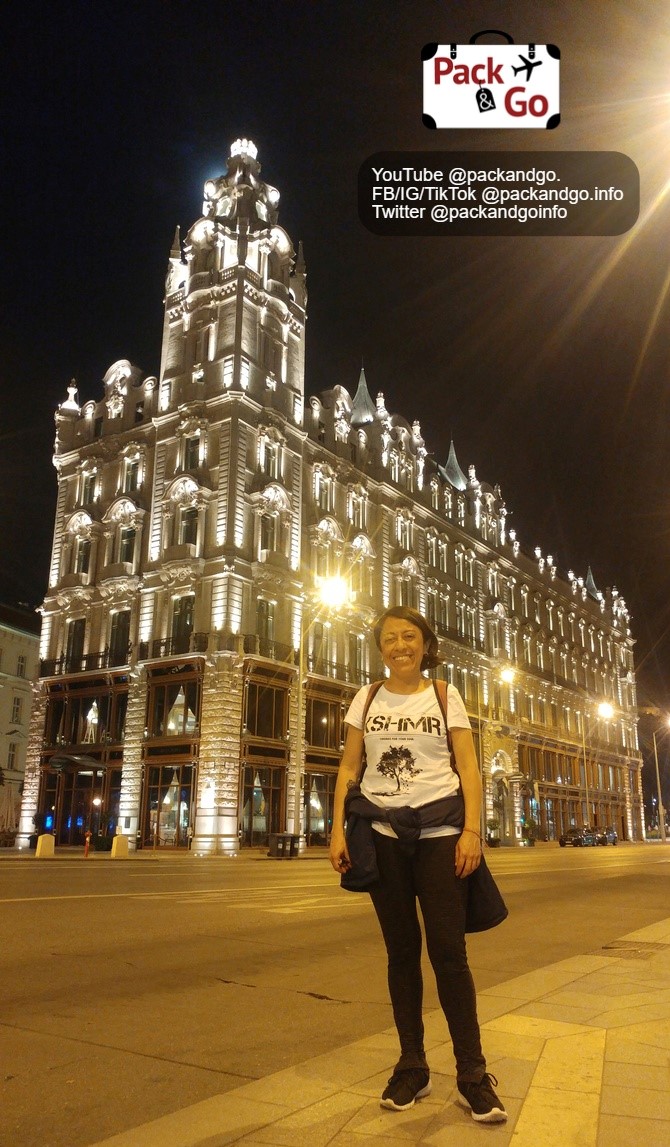
In modern times, you still can see the two sides separated by the Danube river but connected by several gorgeous bridges. Both sides belong to the same city, but each has a specific flavor. You can feel it if you stay longer and observe. These are the kinds of things you can’t realize if you travel in a hurry.
Now, here you have the 5 places of the Pest side that can cause you addiction.
The Hungarian Parliament
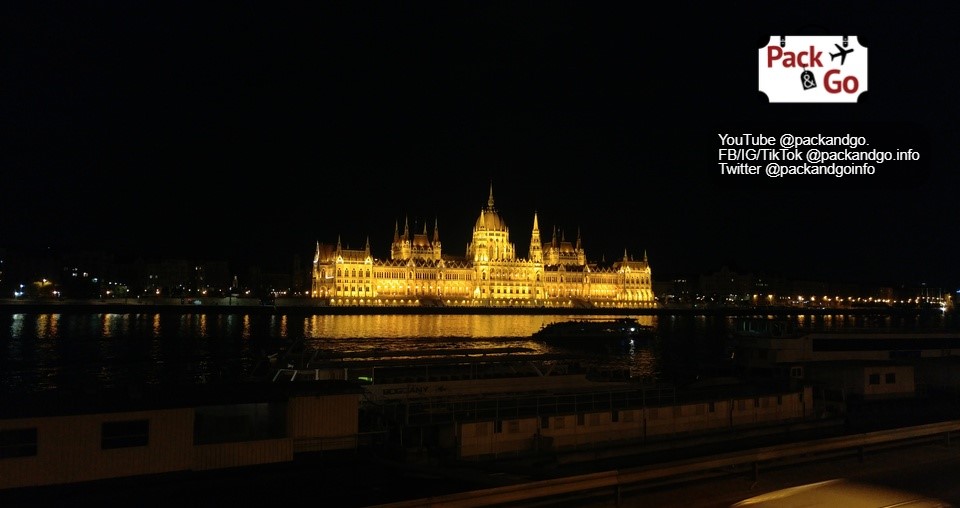
This Neo-Gothic huge building is so far the most emblematic construction of Budapest and it is located on the Pest side of the city, on the East bank of the Danube. You won’t miss it! Most souvenirs include its image. Every single tour includes it. Even if you get lost, you will find it. It is the third largest Parliament building in the world. It houses 691 rooms, 242 sculptures on its walls (inside and outside), and around 19 km of stairs and corridors.
It was the result of a competition to get the best plan to build the Parliament. The winner was a 46-year-old, Hungarian architect called Imre Steindl. The construction started in 1885. It was inaugurated in 1896 when the country commemorated its 1,000th anniversary. At that time, Hungary was part of the Austro-Hungarian monarchy ruled by the Austrians. Around 100,000 workers collaborated to finally, ended the complete building and its multiple ornaments in 1904. Steindl could not see his design finished. He lost his eyesight and later, died in 1902.
You can visit it if the assembly is not in session. Guided tours take 45 minutes during which you will see a couple of lobbies, the main staircase, and the Hungarian crown jewels. Check for the schedules, tours, and more details on its official site http://hungarianparliament.com/tours/
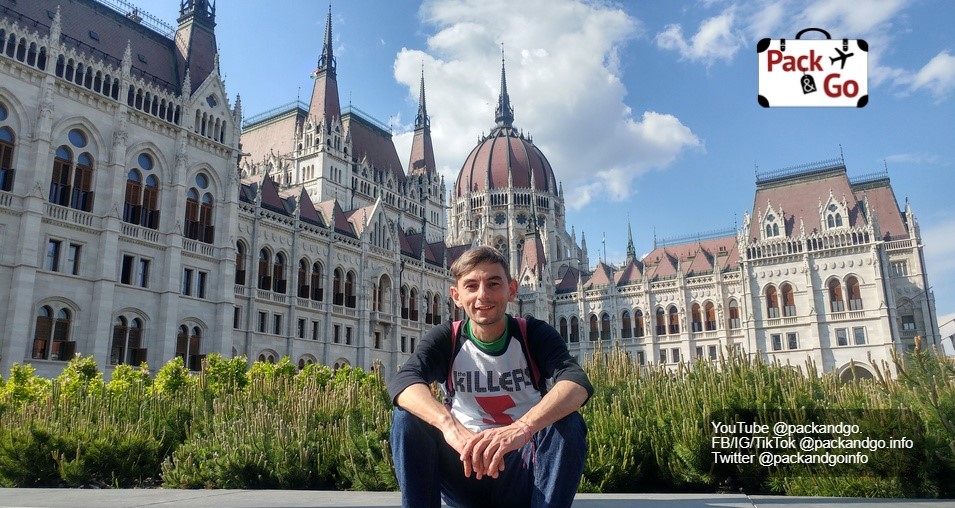
We have been walking around the Parliament many times because its location is a very pleasant one. We strongly recommend you visit the area during the day and in the evening. The pictures are just amazing! On the day, the Parliament’s details and the Danube will look gorgeous. And later on, without daylight, the building becomes a very shiny jewel due to its powerful illumination. We have many pictures, but never too many, haha Always there is a new angle to get a new shot. Or simply, we are too addicted to this beautiful place!
Saint Stephen's Basilica (Budapest)
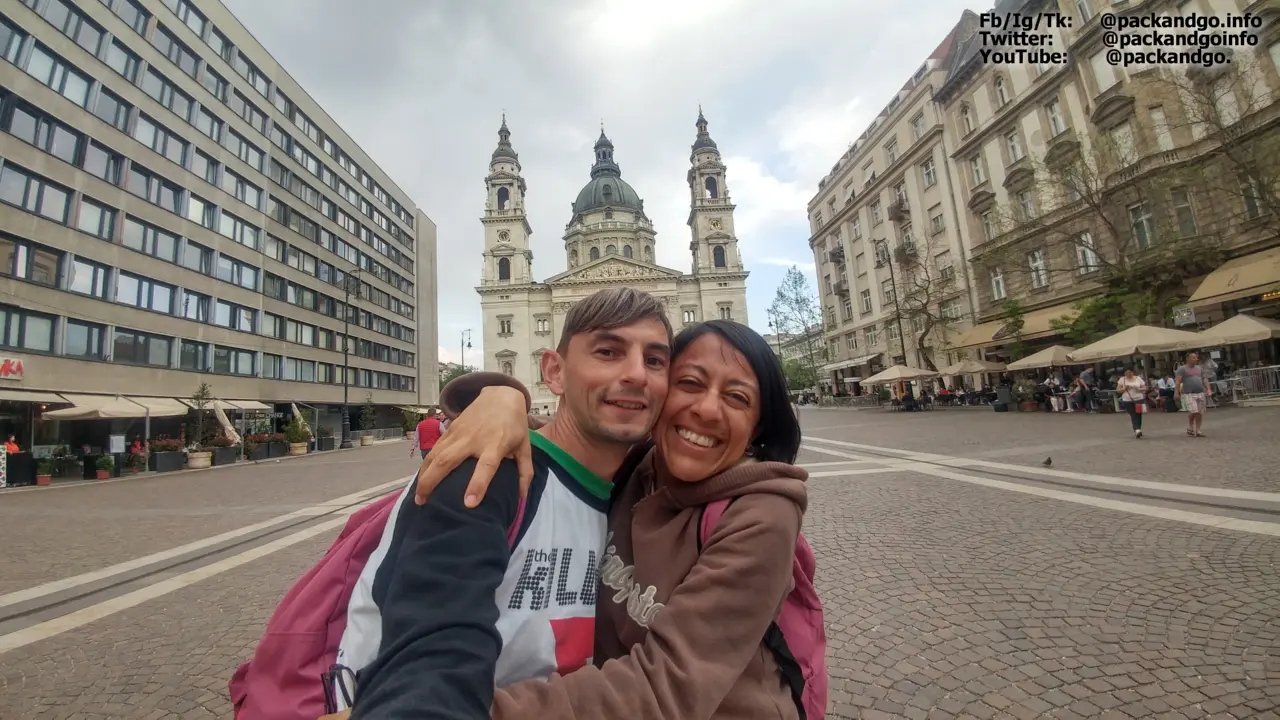
Saint Stephen or King Stephen I is very important in Hungarian history. You will see his name all across Hungary. He is considered the founder of the Hungarian state and Kingdom. He was born pagan, his pagan name was Vajk, but later baptized and raised as a Christian. Under his rule, the Christianization of Hungary started and that brought big changes. He died in 1038 and was declared a saint in 1083. There is a national holiday to commemorate him and the foundation of the State (August 20th).
So much can be said about Saint Stephen, but what honestly got our attention was that currently, you still can see a part of his body exactly in this Basilica. His right hand! And there is more! The “Holy Right” as it is called, takes part in the commemoration every August 20th. Yes, the mummified hand goes outside the Basilica, to lead the yearly parade. As creepy as it sounds, it awoke our curiosity haha. We visited the Basilica mostly to see the hand and once there, ok, we saw that the Basilica is a very tall building, with architectonic value. You can access the top and enjoy a panoramic view.
To see the hand, you have to look for it on the right side of the Basilica. It is in a glass box. There is a slot in it. Once you insert 200 Forint (.50 Euro), a light turns on illuminating the Holy right for a minute. It is a weird experience to check the details of a mummified piece of human, but we won’t deny it was a cool and different experience to be in front of that yellowish and shrank hand. Imagine that in the past, people even fought to own it.
Shortly told, to canonize him, his corpse was exhumed from the crypt. And the story tells that people got amazed when watching his right arm (only) was as fresh as the day he got buried (they said). They took off the complete arm for preservation and veneration purposes. But the hand hasn’t rested in peace since then.
In the 13th century, as a result of a Tartar invasion, the arm was sent to some Dominican monks in Dubrovnik, Croatia. Those monks seemed to face a controversy between two branches of the church aiming to own the Saint Stephen arm. So the monks cut the arm in two pieces to solve the problem. The upper part was sent to Lemburg and the lower to Vienna. Jealousy can drive humans crazy! Anyway, that’s not a discovery.
The hand got back to Hungary, then it traveled again to Austria when the Second World War approached Hungary (1944), and well, eventually it got back to Hungary but it is still a very active hand, as you can realize.
There are different tickets based on what exactly you want to explore in the Basilica. You can take a look at this website to have a clearer reference for your visit. https://www.bazilika.jegy.eu
The surroundings of the Basilica are great to enjoy and explore and find more treasures. Just give it a try! You will never have enough of Pest.
Heroes' Square (Budapest)
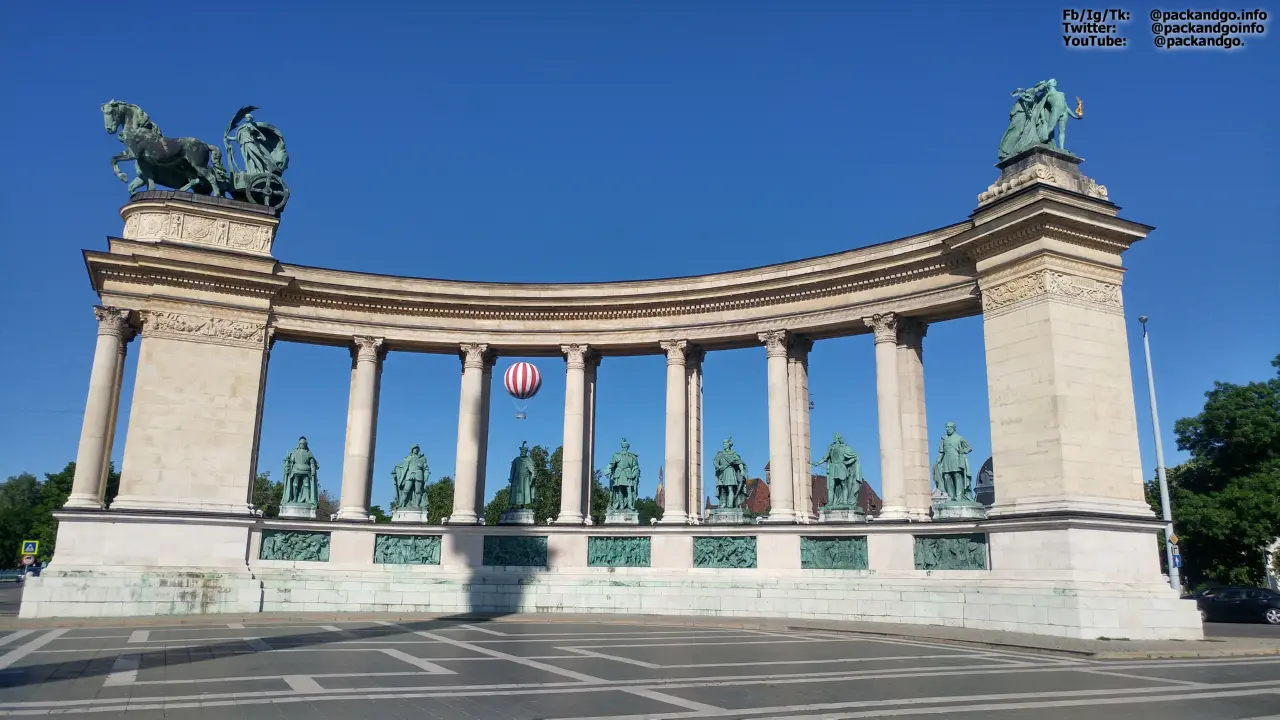
Impressive, large, and full of history is the Heroes’ square of Budapest. It is another strategic spot to visit because either as a goal or starting point for a walk, it will make you pass through many cool attractions in the Pest side of Budapest. The Museum of Fine Arts and City Park are there, Andrássy avenue too, and just with these three places, you have a lot to explore. But we are getting distracted again. Let’s focus on Heroes’ square! We always get back there because every time is different. The monuments and the history don’t change, but the route we take, the things we find, the people around us, and the experience itself do change.
Heroes’ square commemorates Hungary’s important leaders. Like many attractions in Budapest, it was built in the 19th century as a part of the 1,000th anniversary of the foundation of the country. Look for Andrássy avenue on your GPS and you will find it easily. One of the first things your eyes will spot is the Millennium Memorial which represents the seven Magyar tribes that founded Hungary. There is a large column with the Archangel Gabriel on top, statues of different government figures, tall pillars, the Memorial Stone of Heroes (frequently erroneously called Tomb of the Unknown Soldier), a decorative iron chain that honors the heroes who died fighting for the national independence, and much more. The symbolism of every statue and monument there is big for Hungarians. It is a landmark a must to visit in the capital! During day and night!
Central Market Hall (Great Market Hall Budapest)
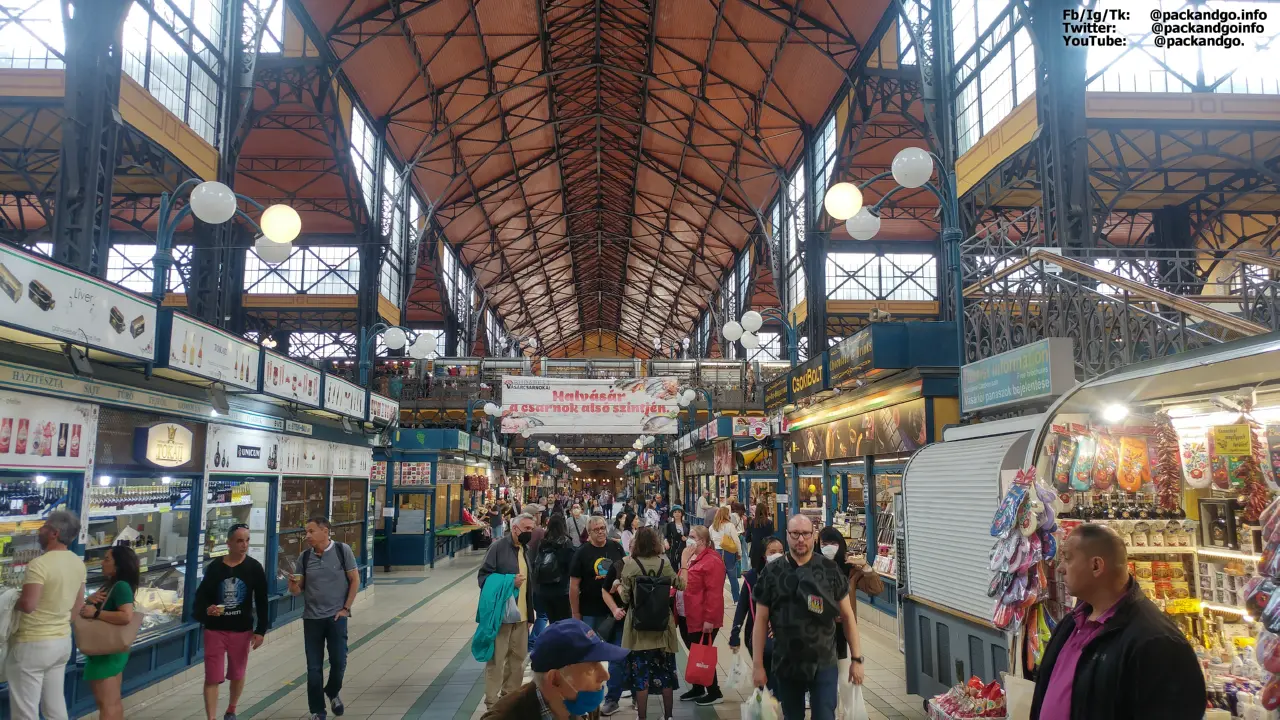
The building that houses the market is another interesting spot to visit. It was first constructed long ago, in 1897, and dairy products, fish, meat, and poultry were traded there. Once, it was consumed by fire so its official opening had to wait, later it got damaged during the Second World War, and until the 1990s, it was properly restored.
It is a very nice market to visit, you will find many tourists because its location is very close to more attractions. But anyway, it is worth a visit! Its architecture, but mostly (for us) the food there is delicious! You can find meat vendors, fresh vegetables and fruit stands, traditional crafts and arts, beautiful souvenirs to take home, and food! Sometimes, the lines to get a generous and tasty lángos on the upper floor are very long.
There are small restaurants there and they are very nice spots to try traditional Hungarian food. The complete market looks clean, the variety of products is wide, and it is a great stop to recharge energy (eating hahaha) and continue your tour around Pest. We are not so much into souvenirs but here we fell into the temptation. The prices and quality of the souvenirs are very decent. Or who knows, we ate there and “full belly, happy heart”. Maybe our optimism was the result of being under the influence of that delicious lángos.

The location of the market is very cool. After being there you have choices to keep walking and enjoying Pest. One of our favorite routes is to go, after the market, direction to the Szabadság bridge also called Liberty or Freedom bridge. It is that greenish, big, art nouveau bridge that is always alive, full of young people gathering, bicycles and cars constantly passing through, and many tourists getting pictures of the mythological sculptures, the industrial structure of the bridge, and the Hungarian coat of arms. And if you keep walking, you will reach the very popular Liberty Statue, an icon of this capital. Well, we won’t go deeper into the Liberty statue or the bridge’s details because bridges and landmarks in Budapest are also great attractions you shouldn’t miss! Haha Again, our addiction is talking, but ok, let’s focus on the next place.
https://piaconline.hu/en/central-market-hall
| Follow PackAndGo.info at: | |
| YouTube | @packandgo. |
| @packandgo.info | |
| @packandgoinfo | |
| @packandgo.info | |
| TikTok | @packandgo.info |
Váci Street (Budapest)
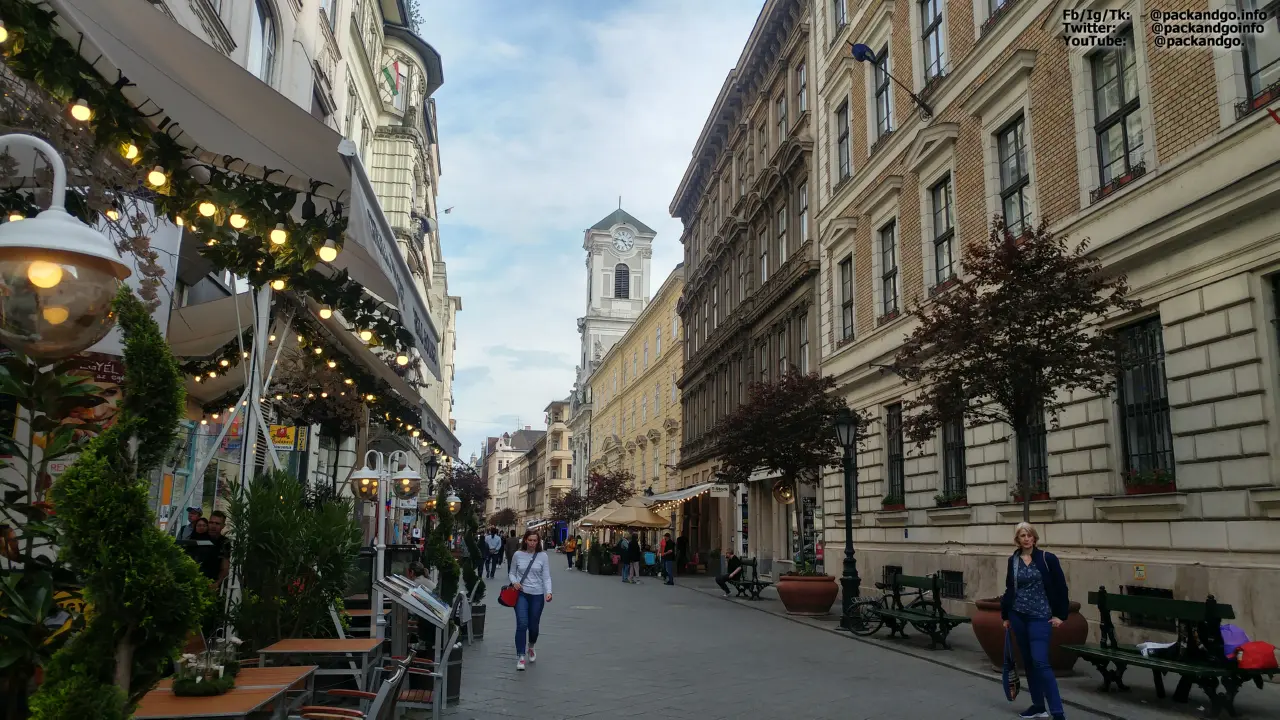
Váci street is very popular and it is located downtown. An ideal place for people-watching and a great walking through Pest shops (all types), grocers, restaurants, clubs, and bars. For instance, if you look for famous ruined bars, Váci street will drive you to many of them. It runs parallel to the Danube so it is a very pleasant street to walk into. You can turn from time to time in its corners, and discover delicious bakeries, wine shops, bookstores, souvenir shops, interesting architecture, clothing shops, coffee shops, different statues, the Saint Michael Church, and much more. Then you can re-take your way into Váci street. You have a big and beautiful reference not to getting lost, the Danube. It is a popular place so expect tourist prices (higher than in other areas). But you don’t have to buy a thing. It is a great and strategic place to explore because it leads you to many attractions. Eventually, you will for sure find your type of place (and prices) so you will get a coffee, beer, or a complete meal. The exploration here can be as short or long as you decide. Believe us, a few hours there and you will crave more!
Conclusion
The Pest side of Budapest causes addiction. There are many cool things to visit and do there. These 5 recommendations were strategically chosen because they will connect you to many more. So yes, instead of stopping your craving for more, we will boost it through this selection. If you are afraid of getting this addiction, from now, you better don’t go to the Pest side of beautiful Budapest. Avoid it at all costs!
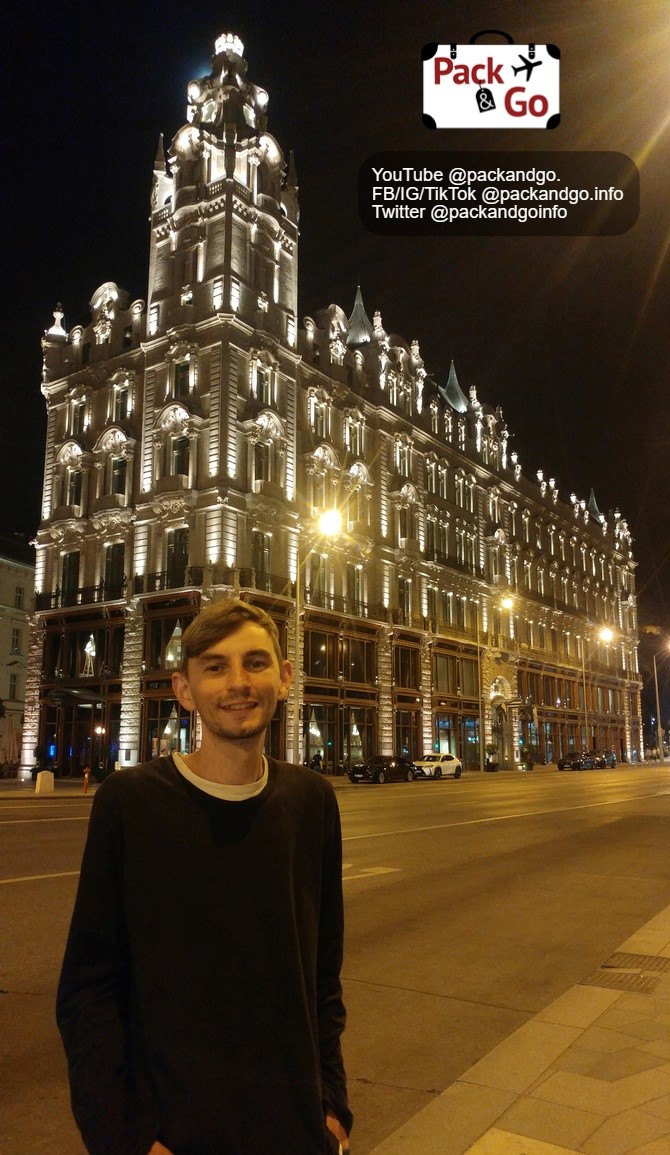
| Follow PackAndGo.info at: | |
| YouTube | @packandgo. |
| @packandgo.info | |
| @packandgoinfo | |
| @packandgo.info | |
| TikTok | @packandgo.info |
Check out our previous stops:
Timișoara, the progressive city that broke the communist chain
Bigar, the once stunning waterfall that is collapsing!
Orșova, Romania a beautiful discovery kicked off by an error
- Details
- Written by: Gianna Esquivel
- Hits: 2019
All the beginning of our trip has been around nature exploring waterfalls, caves, and nature trails. But this time, we just arrived in the first big city, Timișoara. It was not easy to get back to see a lot of people on the street, trams, and vehicles going around. We got a bit intimidated because literally, we were coming out from the bushes hahaha Besides, we are not yet used to the crowds. We have been far from them the last few years due to the COVID-19 pandemic. Before, we lived years in Mexico City so we know about crowds. We had good training. But now, we feel like newbies, very afraid hahaha It took us some time to relax, and then we started enjoying Timișoara, with the mask on.

What is the origin of Timișoara’s name?
Timișoara was the name of a fortress in a Hungarian town called Temesvár, on the Timiș (in the Romanian language) river (Temes in the Hungarian language). The first register of this fortress dates back to 1177.
What is the origin of Timișoara?
Timișoara is an ancient city. Based on archeologists’ discoveries, the zone where the current Timișoara is has been populated since very old times, 200 BC. The first civilization that has been identified in the zone was the Dacian. Through time, the city got influenced by different cultures. For the Romans, it was a crossroads fortress. The Tartars destroyed it in the 13th century. The Turkish conquered it in 1552 and controlled it until 1718. Then 2 centuries of Austrian ruling over the Banat region started.
Architecture is a clear proof of these influences even today. Serb, German, Turk, and Austrian styles are visibly around.
The history of the city is really deep but we got especially interested in one chapter, the Romanian Revolution of 1989.
What happened during the Romanian Revolution in Timișoara in 1989? - A bit of history.
In 1989, a lot of protests and street violence took place (December 16-22, 1989). Communism was collapsing not only in Romania but in different countries. And it was exactly here, in Timișoara where the Romanian Revolution got ignited and from here it spread all around the country. Thanks to this, 42 years of Communism got over for Romania. Nicolae Ceausescu, the General Secretary of the Romanian Communist Party (PCR), and Elena, his wife, were executed.

Romania was living on a deep austerity (rationing of water, oil, food, electricity, medicine, and more prevailed) decided by the Ceausescu regime to pay the external debt of the country. This was the first step to transforming the country into an autocracy. A self-sufficient country ruled by one individual with absolute power.
Ceausescu’s ruling is described as totalitarian and very repressive. He suppressed and controlled the press and media. His Securitate, or secret police, was accused of repression and human rights violations.
On December 16th, 1989, in Timișoara, a Hungarian minority protested against the government's attempt of evicting a pastor called László Tőkés (Hungarian Reformed).
On December 17th, Ceausescu ordered the military repression of the uprising in Timișoara. This event was taken as a political threat. Of course, news about this was censored by the government apparatus. But the event was reported through different radio stations so people across the country knew about it. Protests increased so, in December 21st, Ceausescu gave a speech to a staged demonstration from the balcony of the Central Committee of the PCR in Bucharest. The presence of the Securitate was not enough to calm the protesters. They heckled Ceausescu while chanting “Ti-mi-șoa-ra”. He was taken inside the building by members of his security and the government TV broadcast was cut in a new attempt to hide the harsh situation. Protesters multiplied in the capital.
On December 22nd, Ceausescu and his wife fled Bucharest in a helicopter, but soon both were captured by the army which didn't support the Ceausescu couple anymore. In the following days, they were convicted on charges of genocide and economic sabotage. On December 25th, the death sentence was executed. Nicolae Ceausescu and Elena were shot.
That way, Timișoara became the spearhead of the Romanian Revolution, the progressive city that broke the communist chain. 42 years of Communism were over in around 10 days of revolts.
| Follow PackAndGo.info at: | |
| YouTube | @packandgo. |
| @packandgo.info | |
| X | @packandgoinfo |
| Bluesky | @packandgo.bsky.social |
| @packandgo.info | |
| TikTok | @packandgo.info |
Why visit Timișoara?
Well, there are different reasons to visit Timișoara: food, beer, architecture, history, and a nice vibe, are some. We stayed 3 days in this beautiful city. We walked daily visiting its treasures and we didn’t see them all. We will recommend you our favorites.
Museum of the Communist Consumer (Muzeul Consumatorului Comunist).
It’s a great place! It’s not a common museum. You won’t find a building with exhibition rooms full of vitrines and scientific descriptions of rare items. You will arrive instead at a typical Romanian apartment from Communist time. The exhibition rooms are the kitchen, kids’ room, living room, and corridors of the apartment. Objects are not perfectly organized. Instead, they are in piles, put in the closet and drawers of the furniture. Everything looked a bit messy, and that creates a perfect fiction for visitors to feel like the owners could get back at any given moment. All the stuff you find there was the type of things (furniture, carpets, toys, outfits, vinyls, radios, TVs, bicycles, flowered curtains and pillows, kitchen tools, food products, Romanian history books, the three-volume of Das Kapital of Karl Marx, propaganda, and much more) that Romanian consumers could buy during the Communism (before 1989).
It’s a fascinating jump into the past! Being a Mexican, it is like getting into a different world. Only a few of these objects were familiar to me. But for a Bulgarian like Martin and other Europeans there, this experience is like being in the home of their grandparents. They can recognize most of the objects, old brands, and styles of things. More than once, we heard “my grandpa had that old phone”, “my grandma loved those cans (conservas), “my father had that model of ice skates”, and “my mother still has an old doll like these”. That big collection of objects really means something to most of the visitors. There’s a kind of melancholy in the air. For some, those objects trigger both, sweet and bitter memories. The Revolution of 1989 was without a doubt, life-changing for Romanians. To visit this museum is a very cool and human experience! Besides, you can go upstairs to drink a cold beer or a local drink in the bar. We totally recommend it! By the way, there’s no entrance fee.
The Orthodox Metropolitan Cathedral (Catedrala Mitropolitană Ortodoxă).
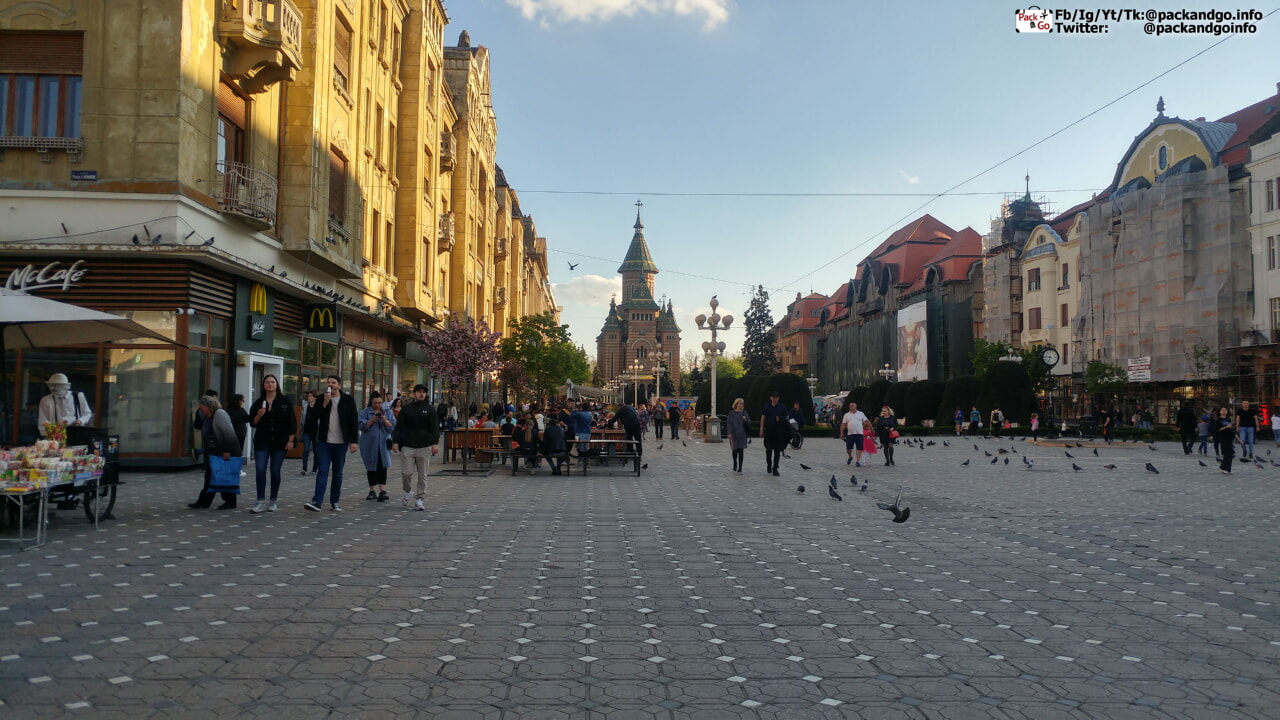
The cathedral is an iconic structure of the city and a reference for you to explore around. It’s located in the middle of the main traffic arteries. Its construction started in 1936 and its inauguration occurred in 1940. Sculpture, painting, and architecture (Byzantine and Moldavian style) are values to consider in this building. We were told that 5,000 oak logs give support to the cathedral’s structure. The cathedral witnessed tragic events during the 1989 Revolution. On its steps, revolutionaries were shot.
Victory Square (Piața Victoriei).
Previously, this was a boulevard for vehicles and there, Timișoara was proclaimed the first free city of Romania on December 20, 1989.
The boulevard was called Victory Square and access is only allowed to pedestrians. Walking there you can see different statues like the one of the Wolf, Romulus, and Remus. It was donated in 1926, by Rome as a way to remember the common Latin roots.
Opera Square (Piața Operei).
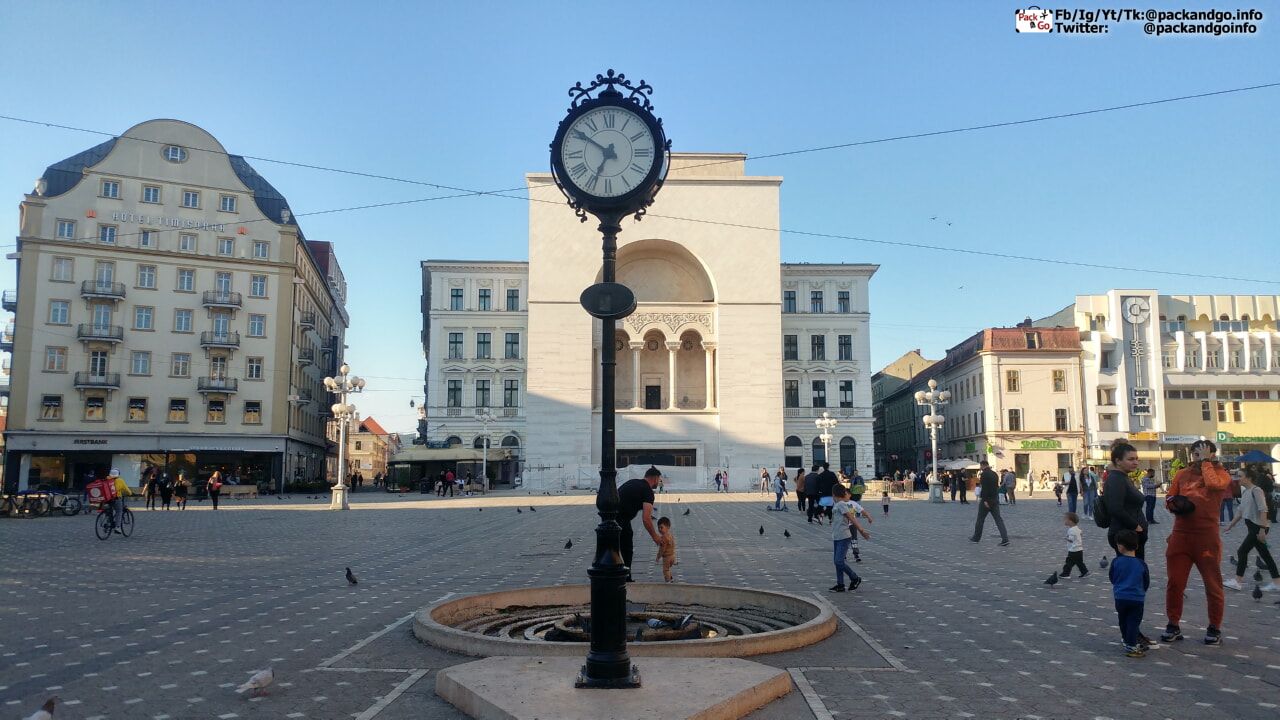
This Opera Square is very close to Victory Square. They naturally connect at a point. It’s a very nice place to walk and of course, there the opera house building is.
Union Square also called Dome Square (Piața Unirii din Timișoara).

Welcome to the most antique square in the city! It was built within the walls of the prior fortress and it treasures a large number of historical monuments and beautiful buildings, which details can take you hours to admire. If you are an architecture admirer, this is a place for you. Art Nouveau and Baroque styles are everywhere!
Besides its historical treasures, and its colorful, detailed, and pretty facades, this square has a very cool vibe. You can spend hours there walking around, visiting its terraces, exploring every monument and building, or just sitting on a bench to people watching.
The current name of the square dates back to 1919, after World War I, and when the Banat region finally became part of Romania. But the history of this square is deep. It has had different names through time. As said before, there are many monuments you can see but the one in the center of the square will directly call your attention. It’s the Plague Column, also called the Holy Trinity Statue that was built to remember the victims of the bubonic plague (1738-1739).
You can also visit the Serbian Orthodox cathedral, the Roman Catholic cathedral, Brück House, the Baroque Palace (Art Museum), Prenner House, the House with Lions, Nikolaus Lenau High School, and many more buildings.
Museum of the Revolution (Muzeul Revolutiei or Memorialul Revolutiei).

As mentioned before, events in Timișoara triggered the Romanian Revolution that finally broke the communist chain. This museum keeps alive the memory of the people who participated in this movement, through photos, testimonies, personal documents, newspapers, a library, an audiovisual archive, uniforms of the Romanian army, etc.
Bega river.
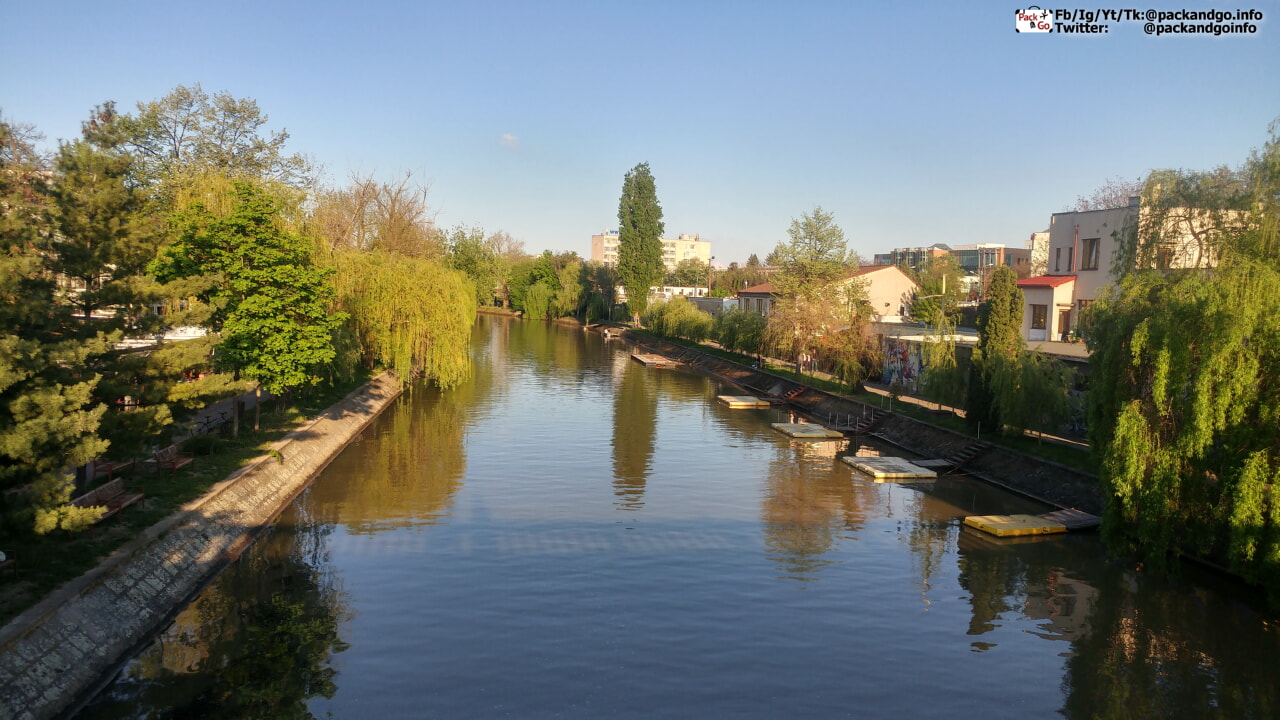
Walking around Timișoara, it’s impossible not to see the Bega river. On the second day we stayed in this nice city, we decided to follow the river’s direction from Union Square. Guys, you will cross through different nice, big parks. You can make the walking as long or short as you decide. We walked something like 4 or 4 and a half kilometers. The banks of the river provide very nice areas for people to relax, walk, run, cycle, gather, and have fun. We were told that during the Summer here it used to be full of bars and music events. They were canceled for the last 2 years due to the pandemic (COVID-19). And this year, the zone is slowly re-opening such activities.
On the way back, locals recommended taking a “Vaporetto” and it was a great idea. There are electric boats in the Bega river and they are public transport, not tourist boats. The price is low (1 RON) and the experience is very nice! It includes 9 stops. You can buy the ticket directly on the boat with cash or a card.
Timișoreana brewery (Curtea Berarilor).
Guys, everybody has his/her poisons. Ours include beer haha If we are in a place that produces this beverage, it becomes a must for us to try it. So we did! The brewery is real and close to it there’s a restaurant where you can try the beer and traditional Romanian food. The brewery premises respect the architectural style of the zone. It’s not a modern building and that is very cool. The Timișoreana brewery was set in this city in 1718. This means you are drinking in every sip, more than 300 years of tradition. We totally recommend you to try it! Noroc! (Cheers!).
A note for beer lovers, there are various local beers in Romania Ursus (Cluj), Ciucas (Brasov), Zaganu (produced close to Zaganu Peak), and Ground Zero (Bucharest). To try them can be a great reason to pack and go to Romania!
The Banat Village Museum (Muzeul Satului Bănățean).
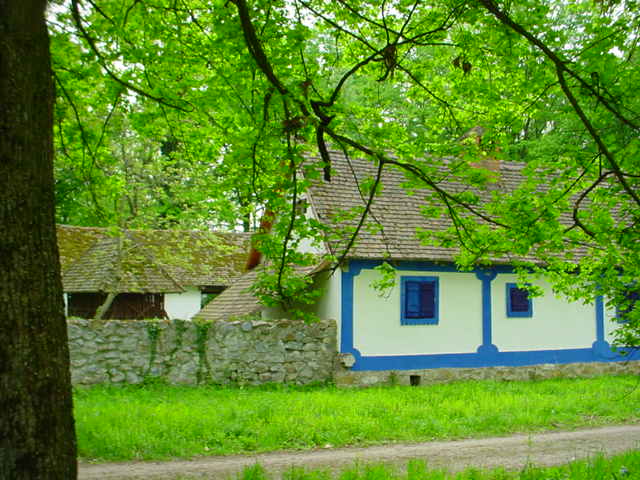
It’s an interesting ethnographic museum set on an outdoor area of 17 hectares. There you find a traditional Banat village. People have built households respecting the original style of different ethnic groups present in the Banat region throughout the time like Hungarians, Ukrainians, Swabians, Slovaks, and of course, Romanians. You will see the church, school, town hall, workshops, and houses a common village used to include. There’s an entrance fee of 10 RON per adult and a lot to walk and see there, guys.
The New Synagogue (Sinagoga Cetate).
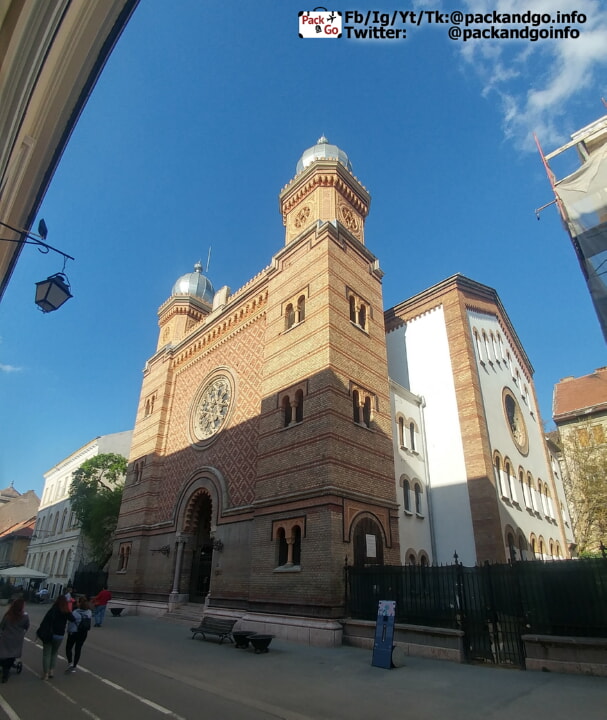
Its construction was finished in 1864 resembling the great synagogue in Oran, Algeria. It’s a large building that can allow up to 1,500 worshipers. Its creation was the result of the growth of the Jewish community, numerically and economically, in the first half of the 19th century. After years of renovations (the latest renovation started in December 2017), it will be open again this year (2022). We were there just a few days away from the opening so we could only see it from outside but still, it was worth a photo of such an old and specific place. If you go inside, get a photo for us and share your opinion of the place, guys!
This is not the synagogue in the city. You can also see the Fabric Synagogue (Sinagoga din Fabric) built in 1899 and the Orthodox Synagogue (Sinagoga Iosefin) built between 1906-1910.
Interesting facts about Timișoara.
- Timișoara was the second city in the world, and the first in Europe, that used electricity for illuminating the streets. New York was first.
- A vast part of the city center was constructed on a swamp.
- Timișoara astonished Europe in 1869 with the introduction of horse-drawn trams, as public transportation.
Conclusion.
Timișoara is a great Romanian destination! Pack and go! Be sure you take comfortable shoes because walking is the best way to enjoy around and there’s a lot to see! Of course, the city has good public transportation but believe us, walking is the best! There’s no way you forget a visit to Timișoara. It will remain in your best traveling memories due to its architecture, parks, beer, Bega river, kind people, etc. For us, besides all the previous, Timișoara is the progressive and beautiful city that broke the communist chain.
There are a few cool destination near Timișoara you must see too:
The beautiful Orșava near Danube river.
Oradea, a surprising Romanian gem.
Or see Cluj-Napoca.
| Follow PackAndGo.info at: | |
| YouTube | @packandgo. |
| @packandgo.info | |
| X | @packandgoinfo |
| Bluesky | @packandgo.bsky.social |
| @packandgo.info | |
| TikTok | @packandgo.info |
